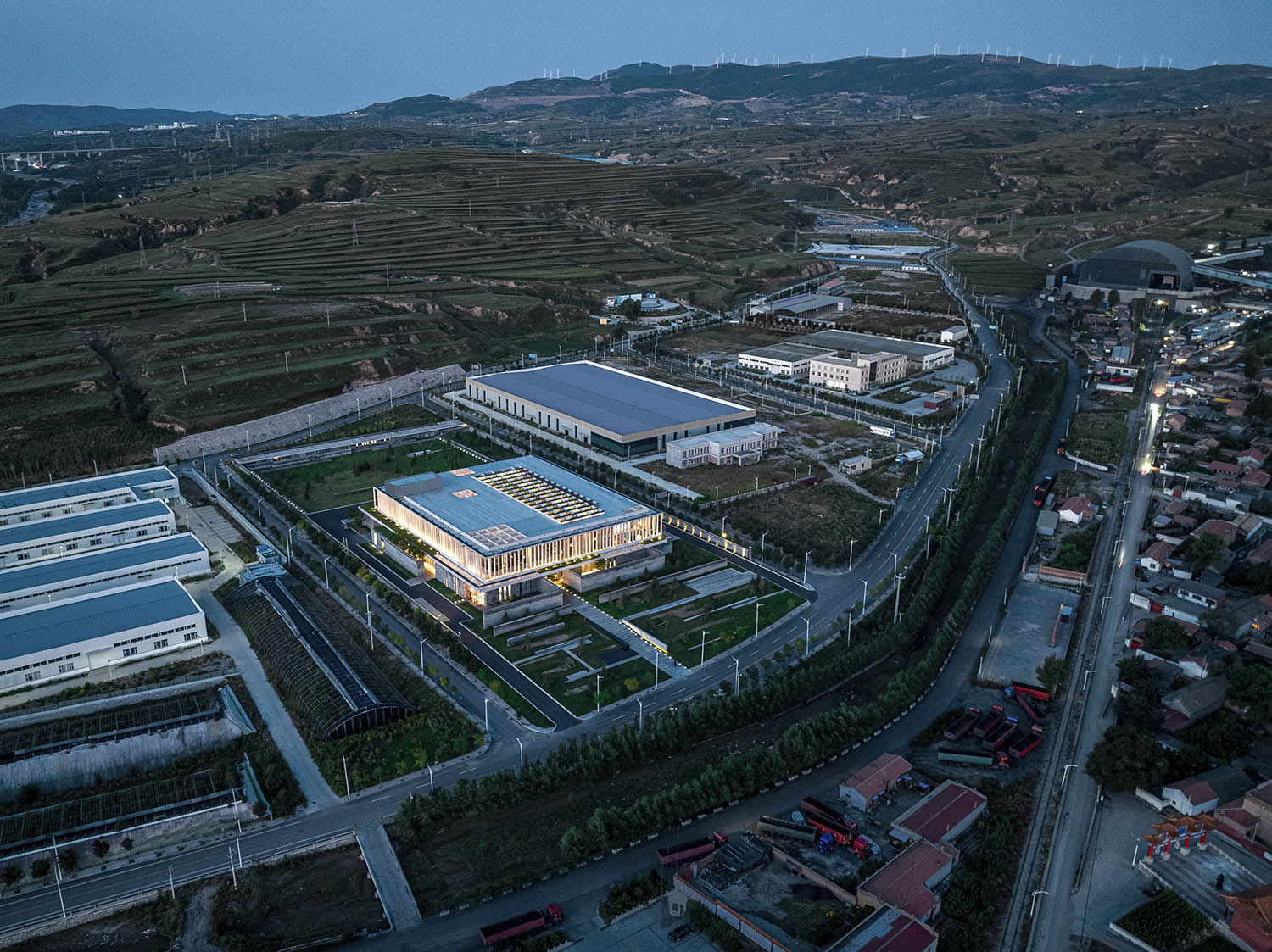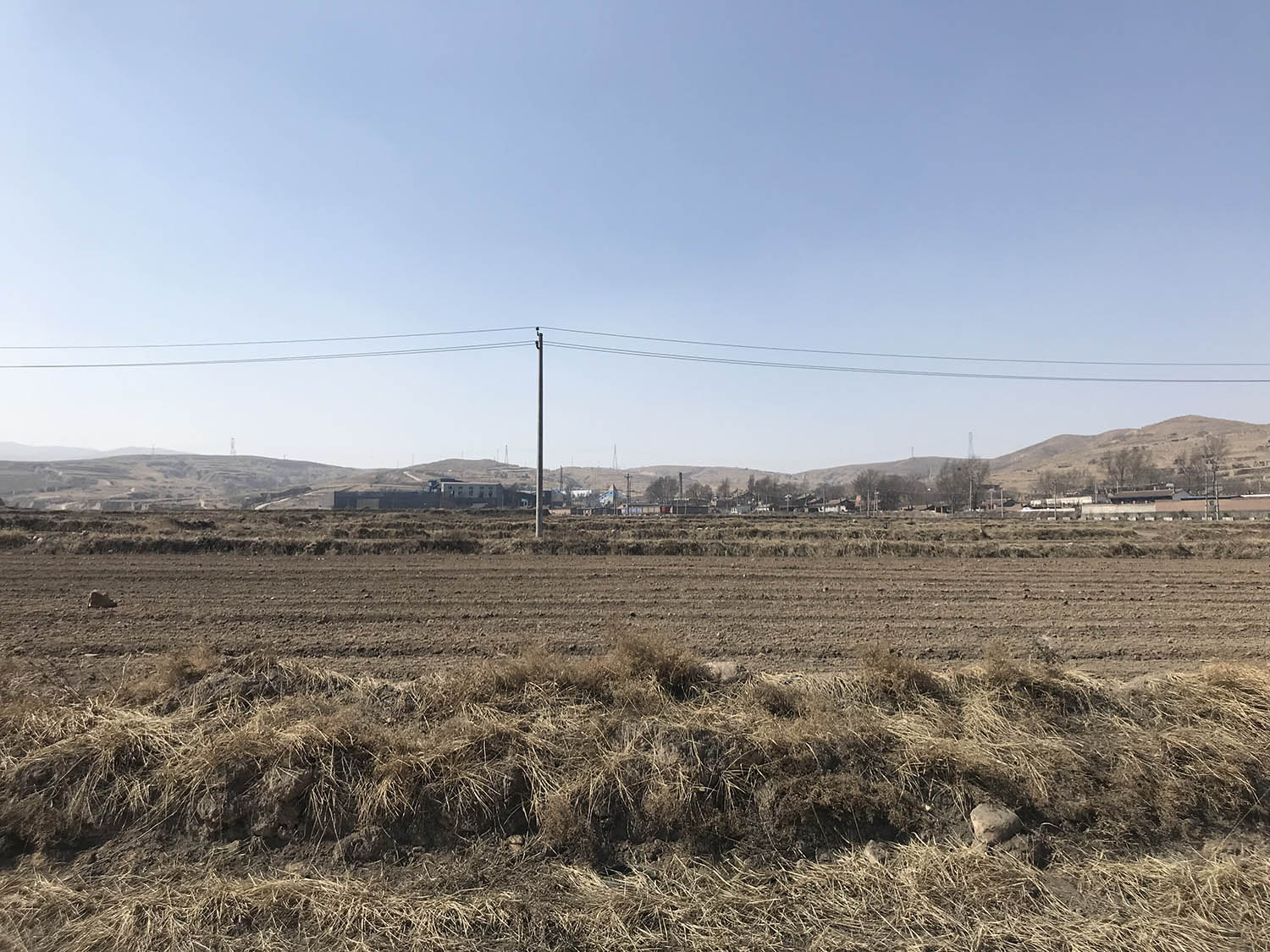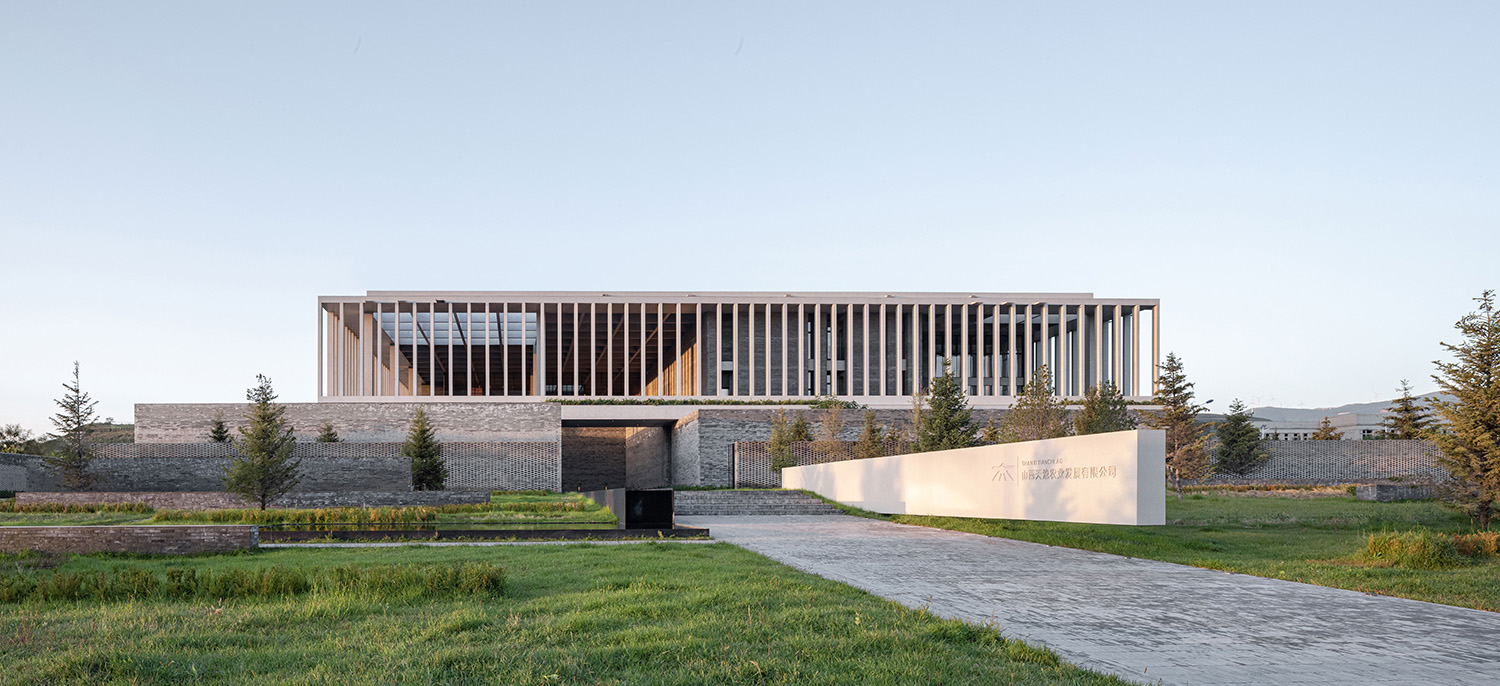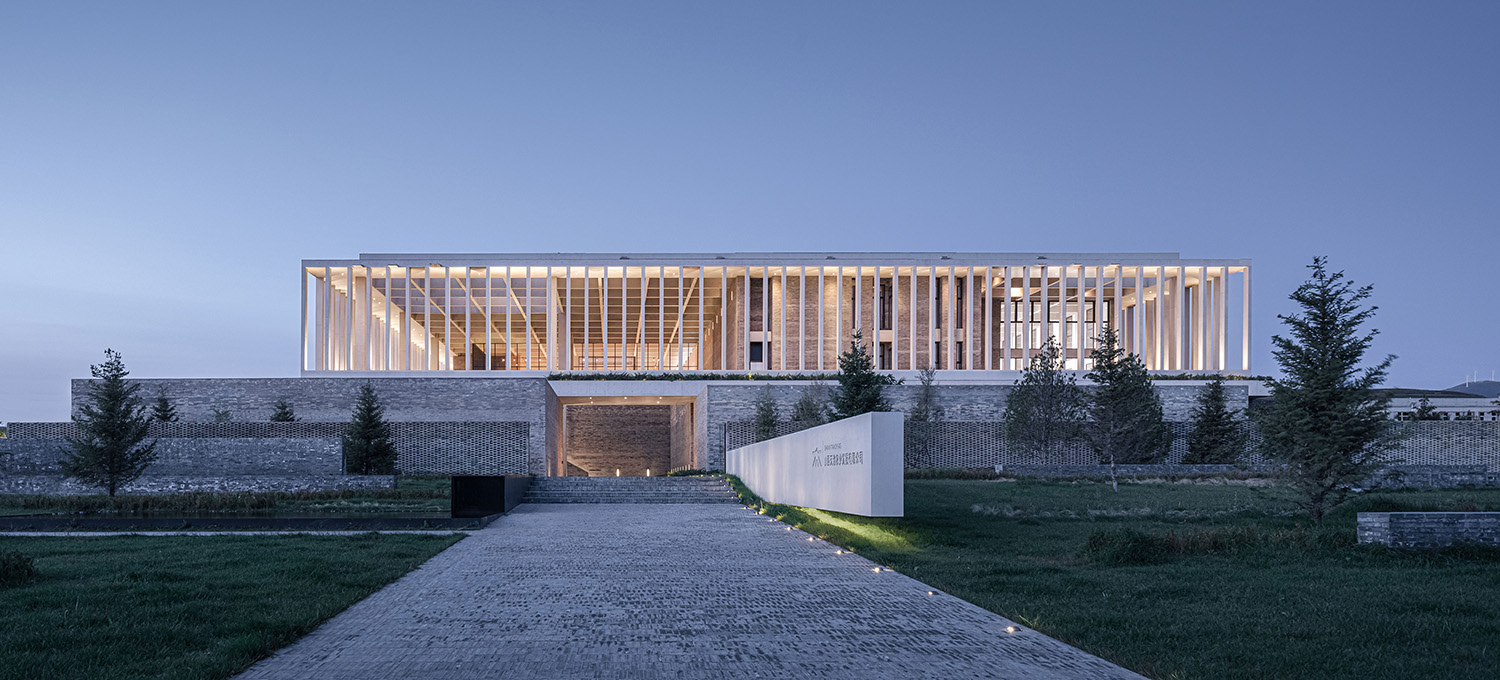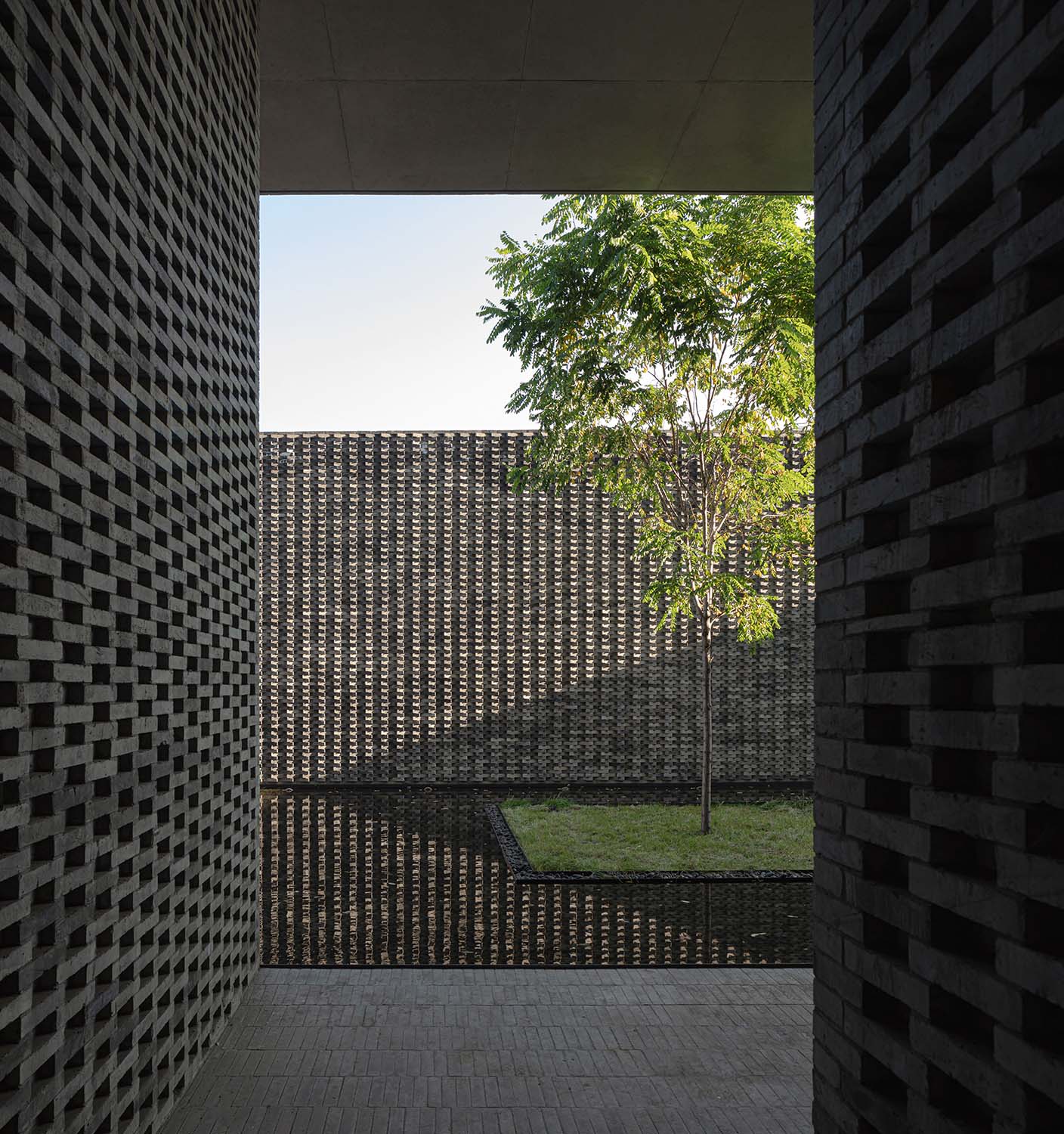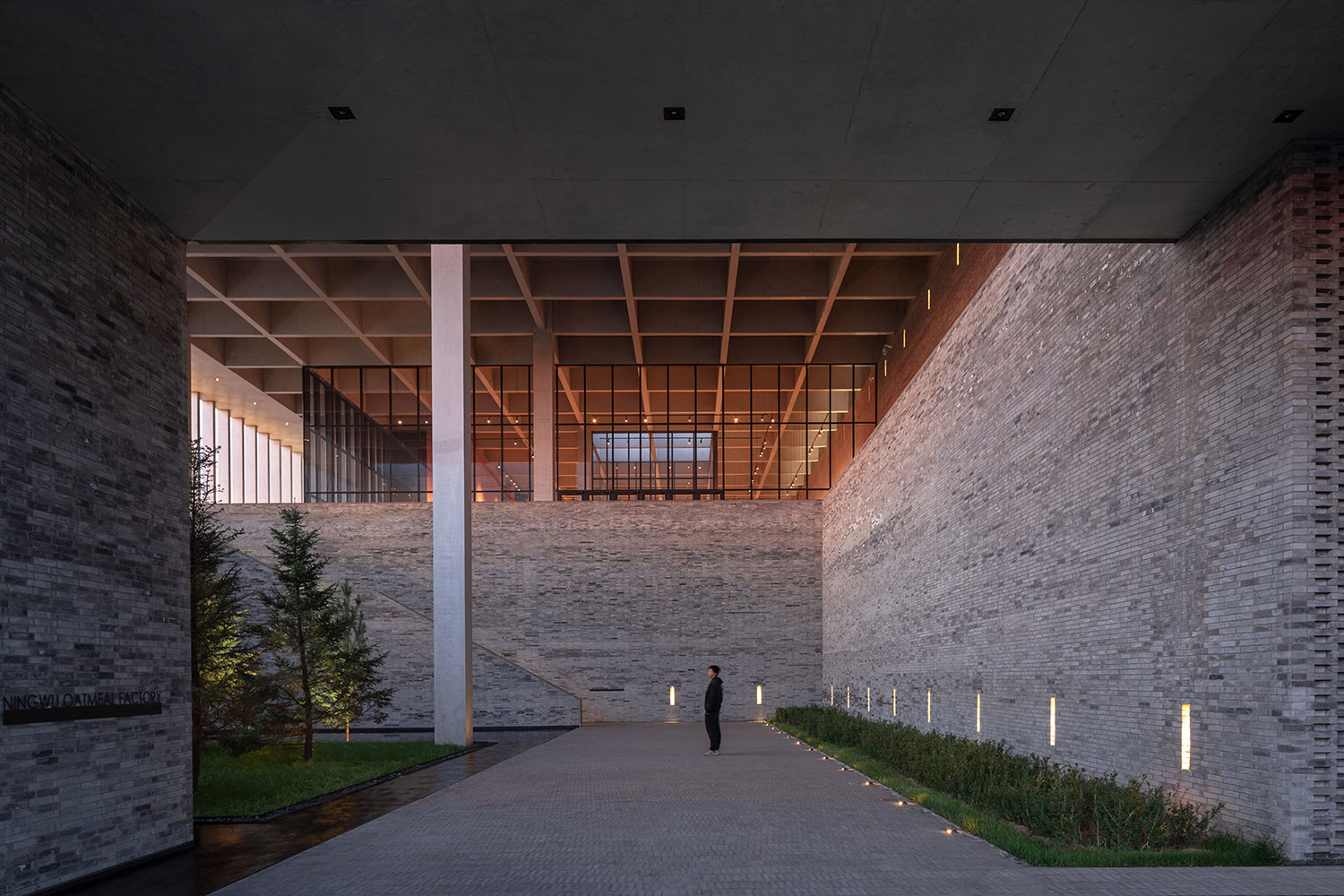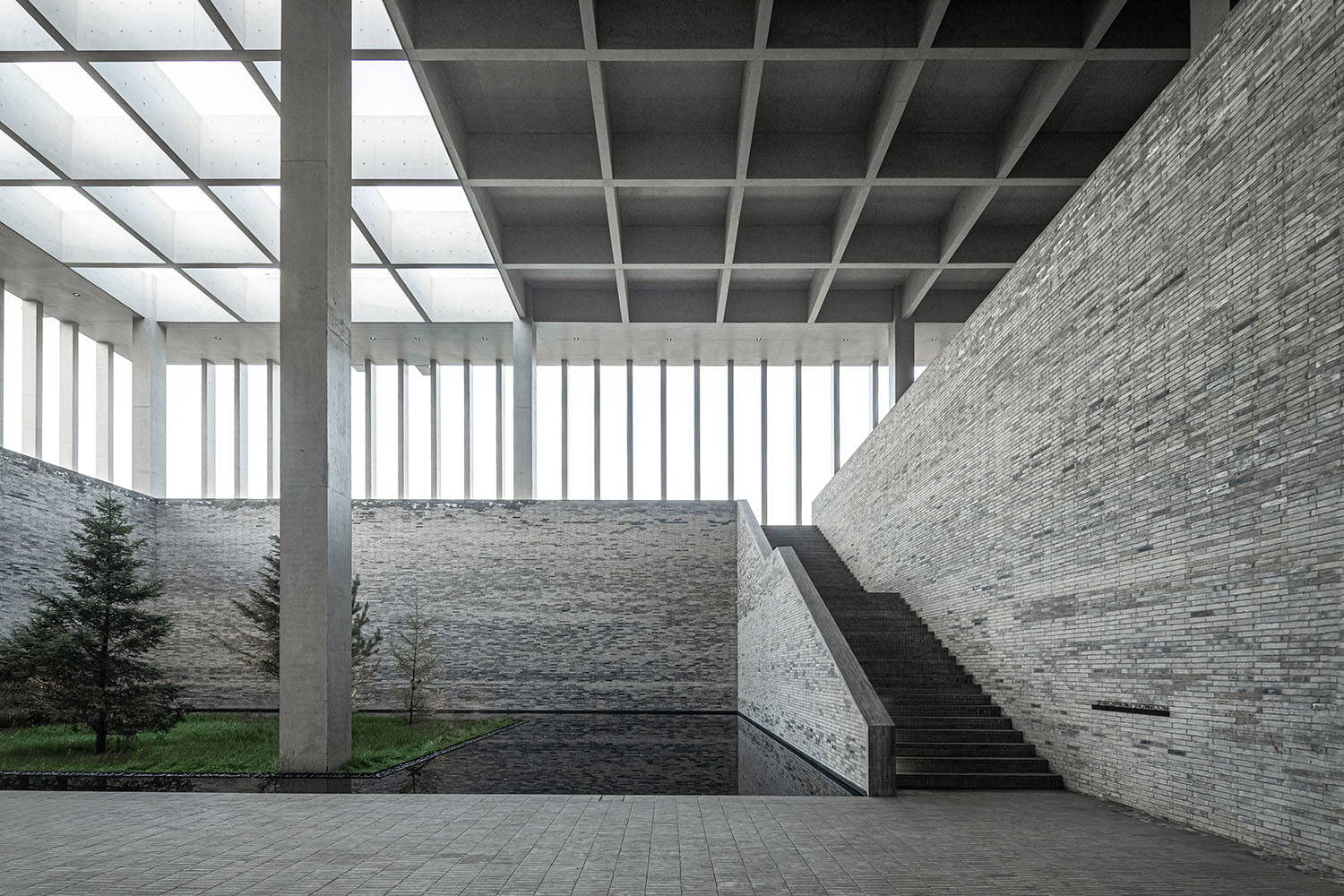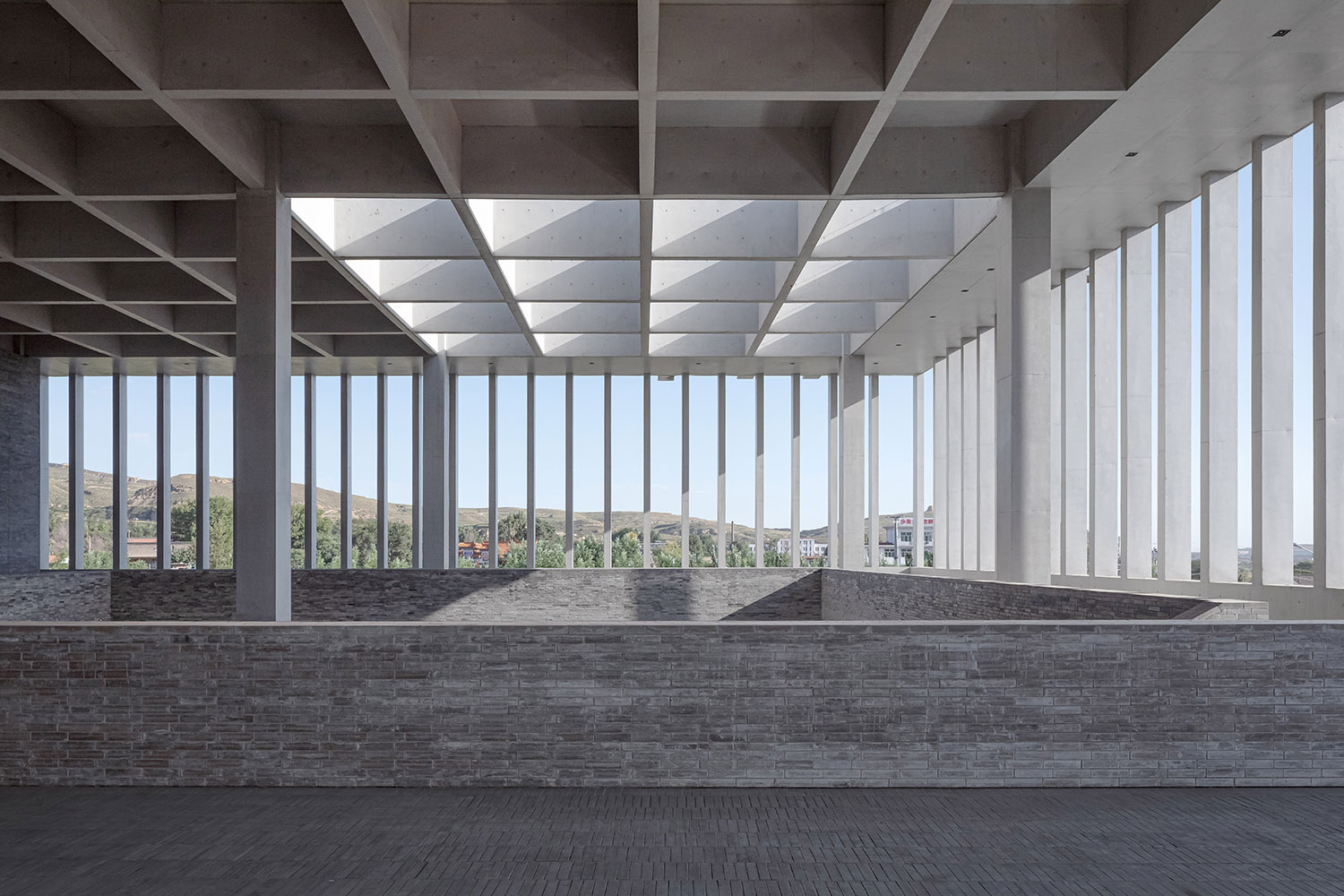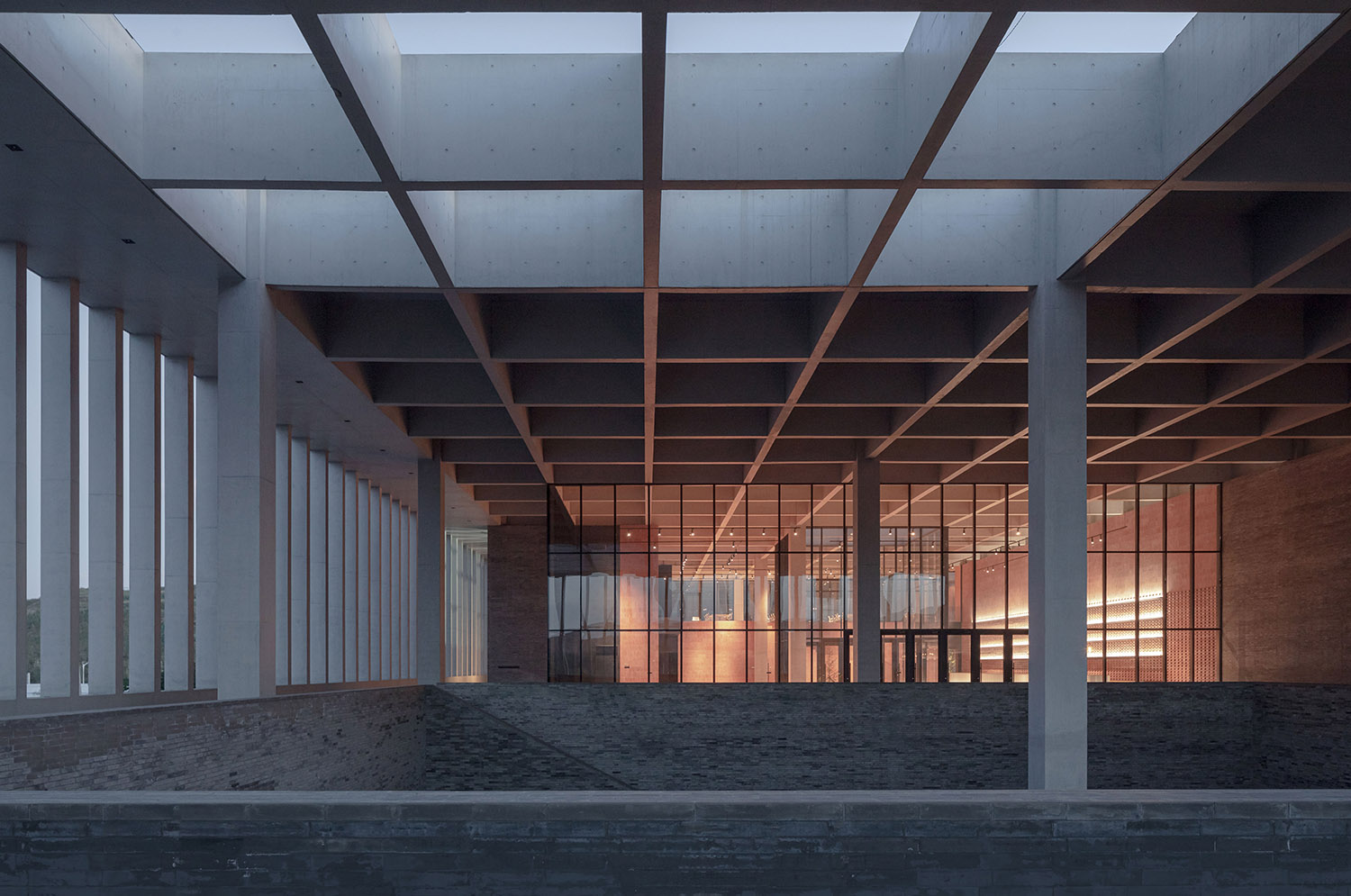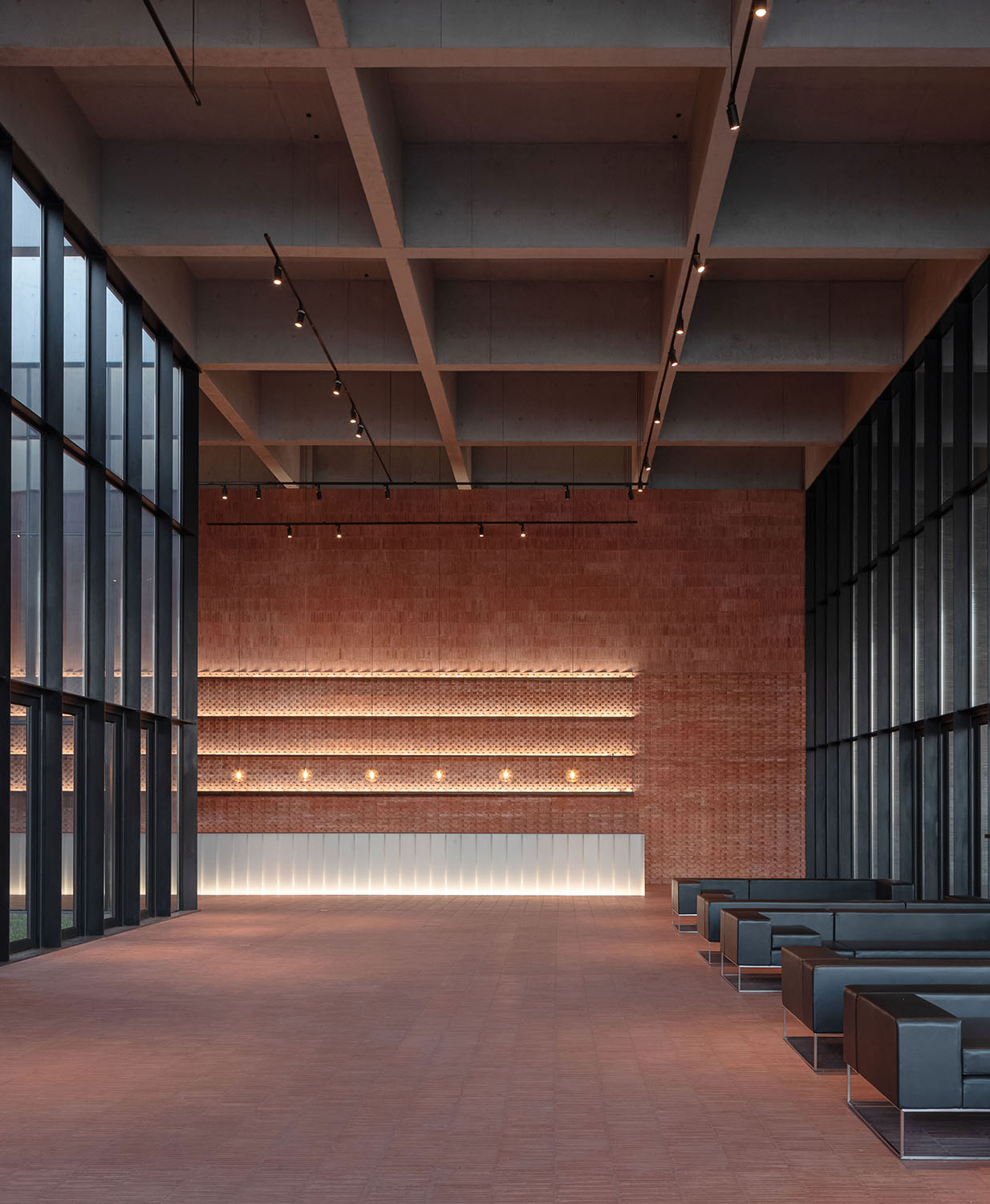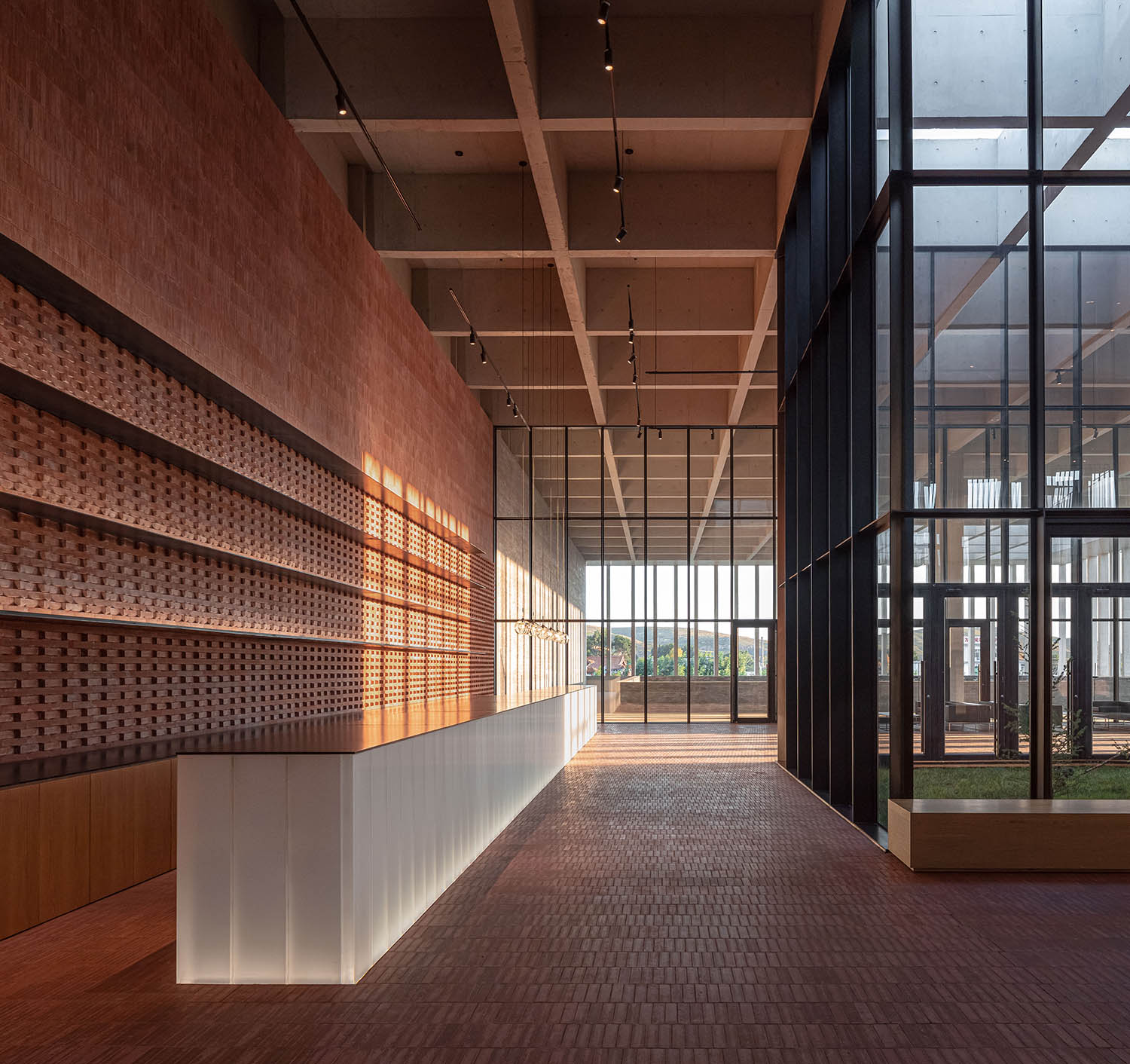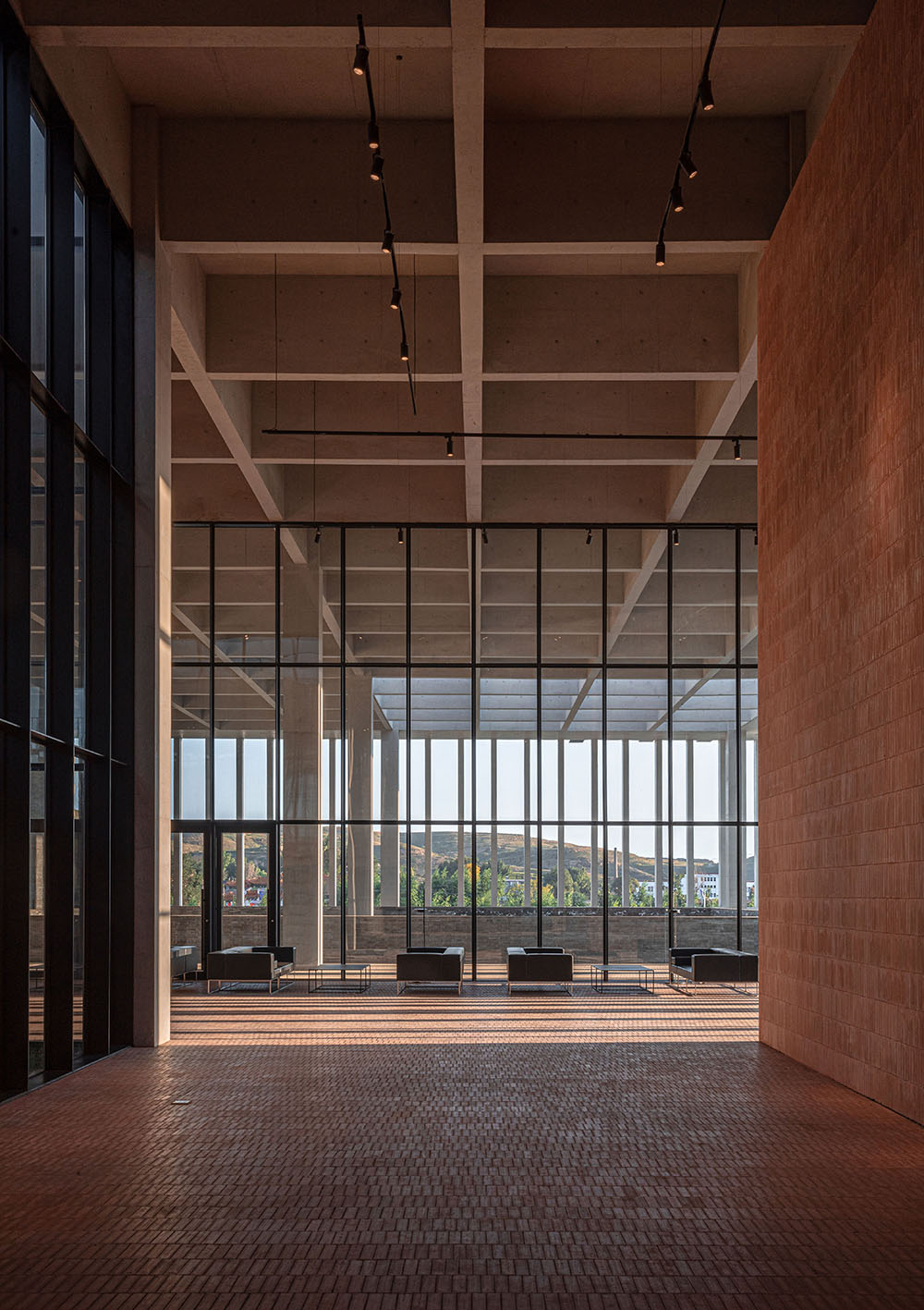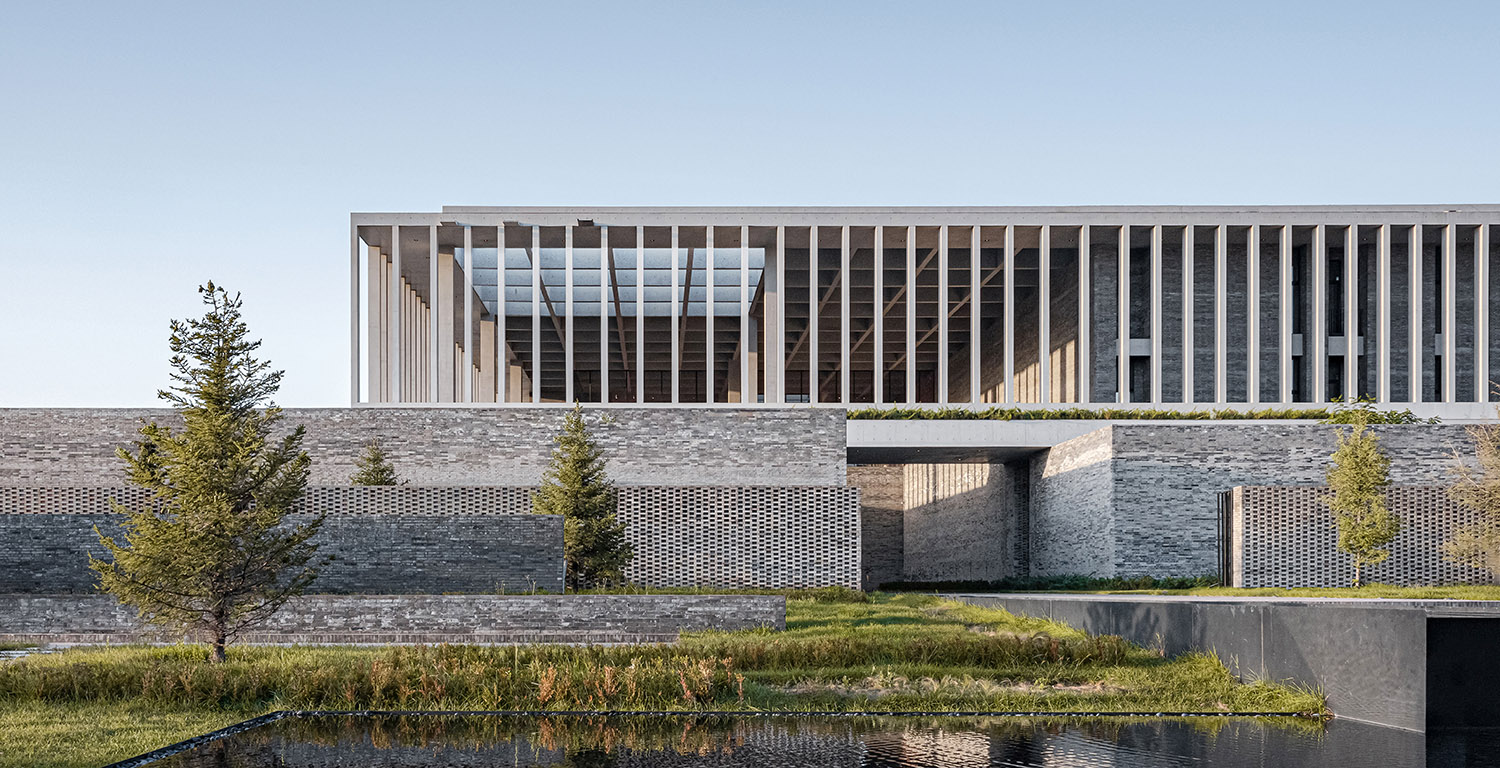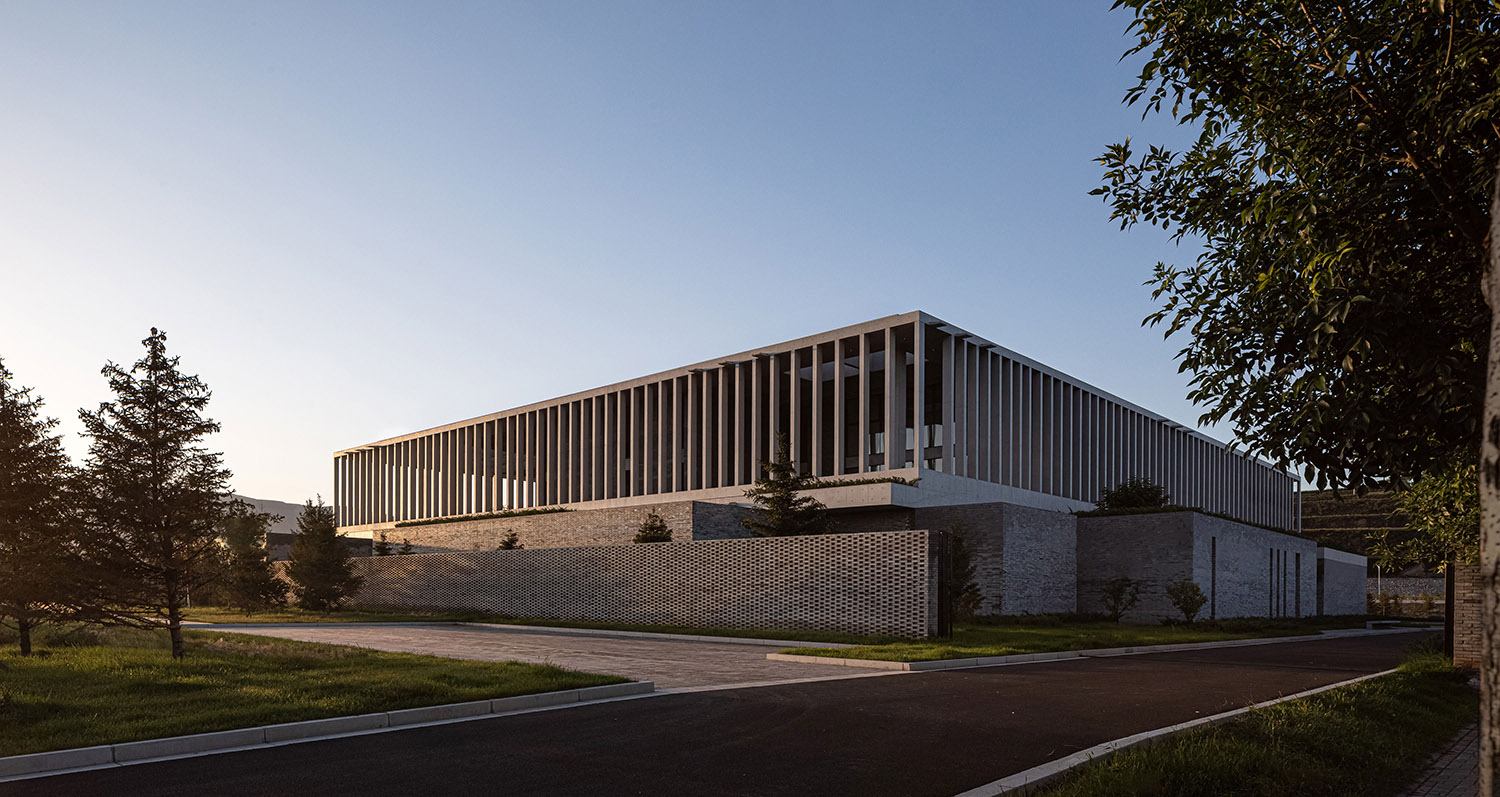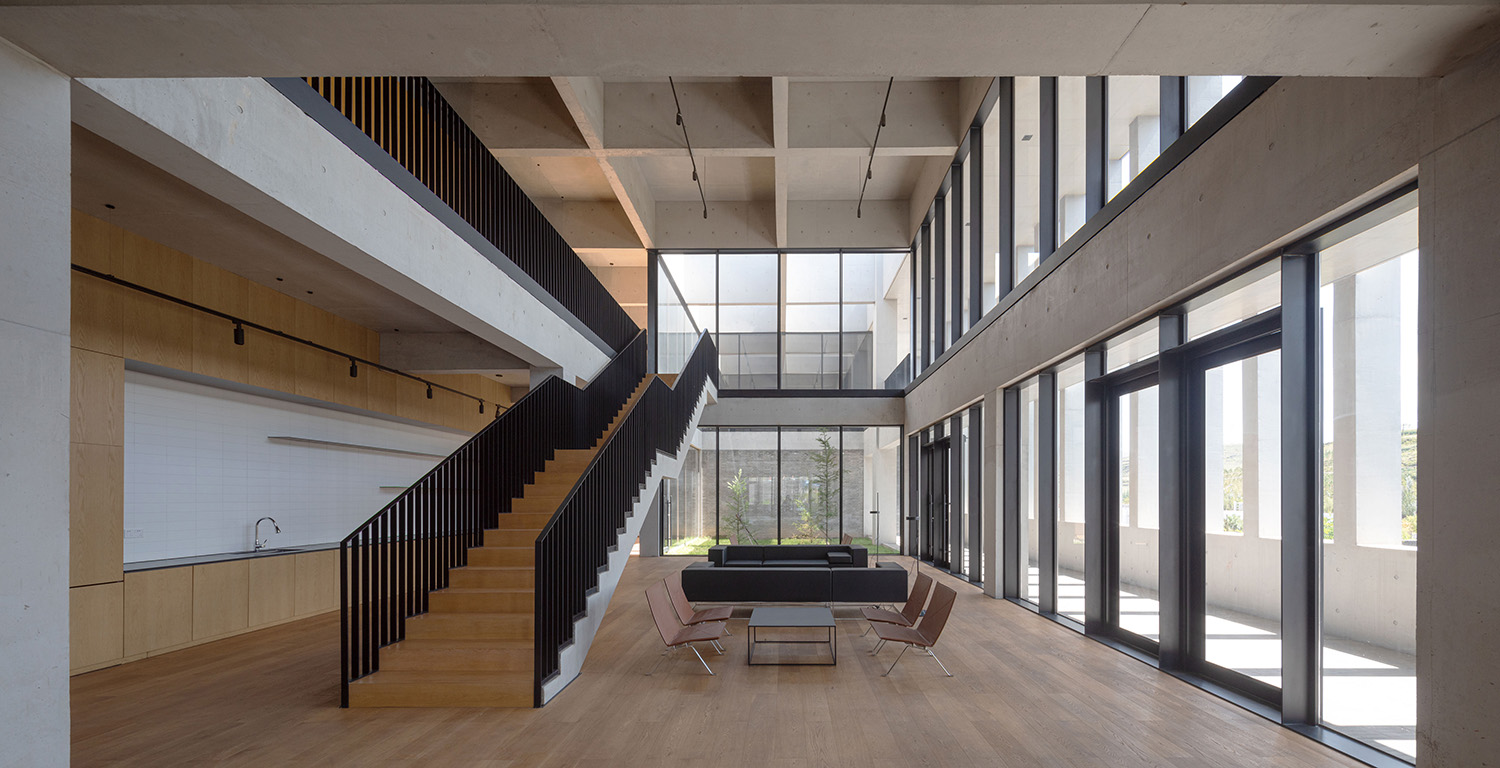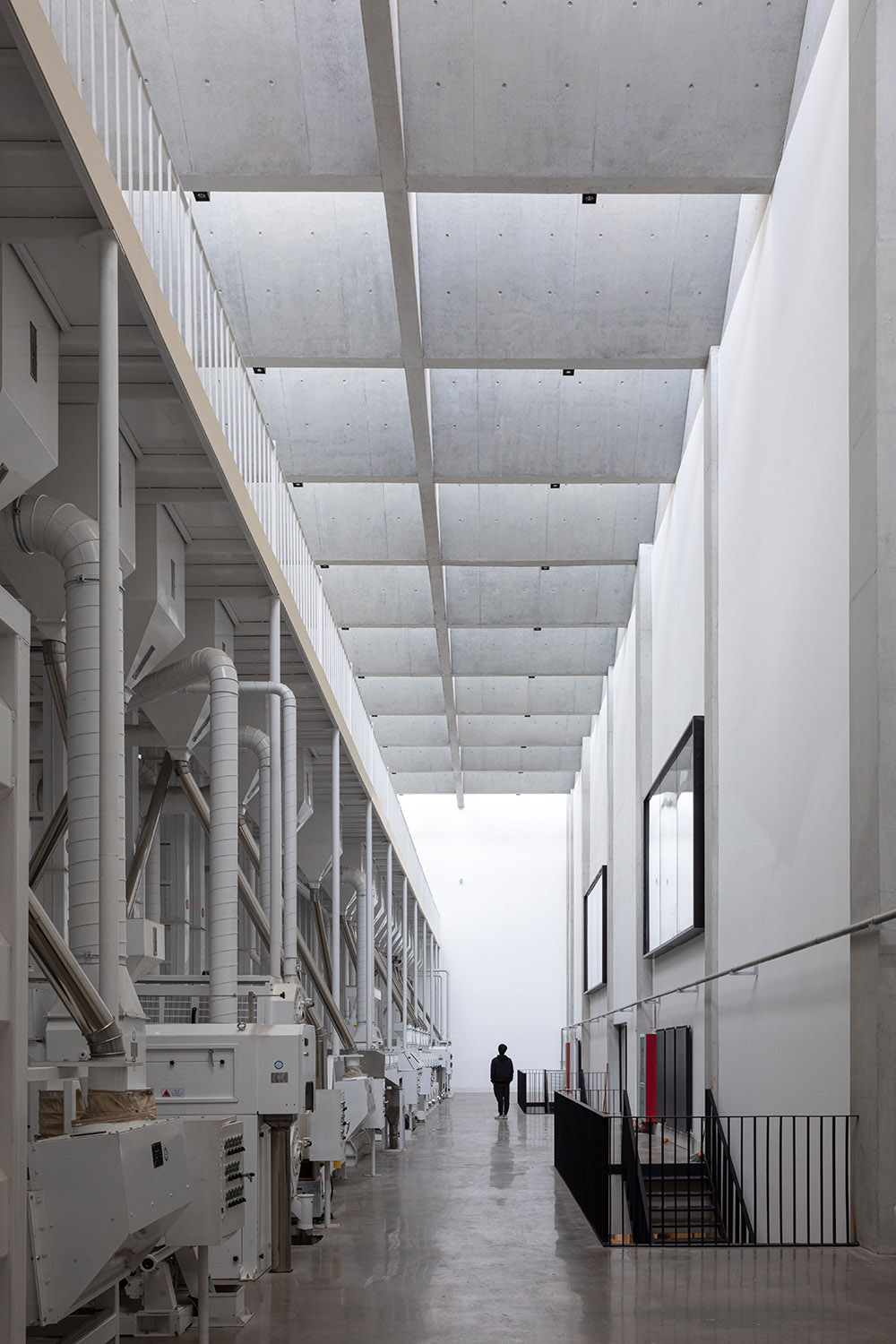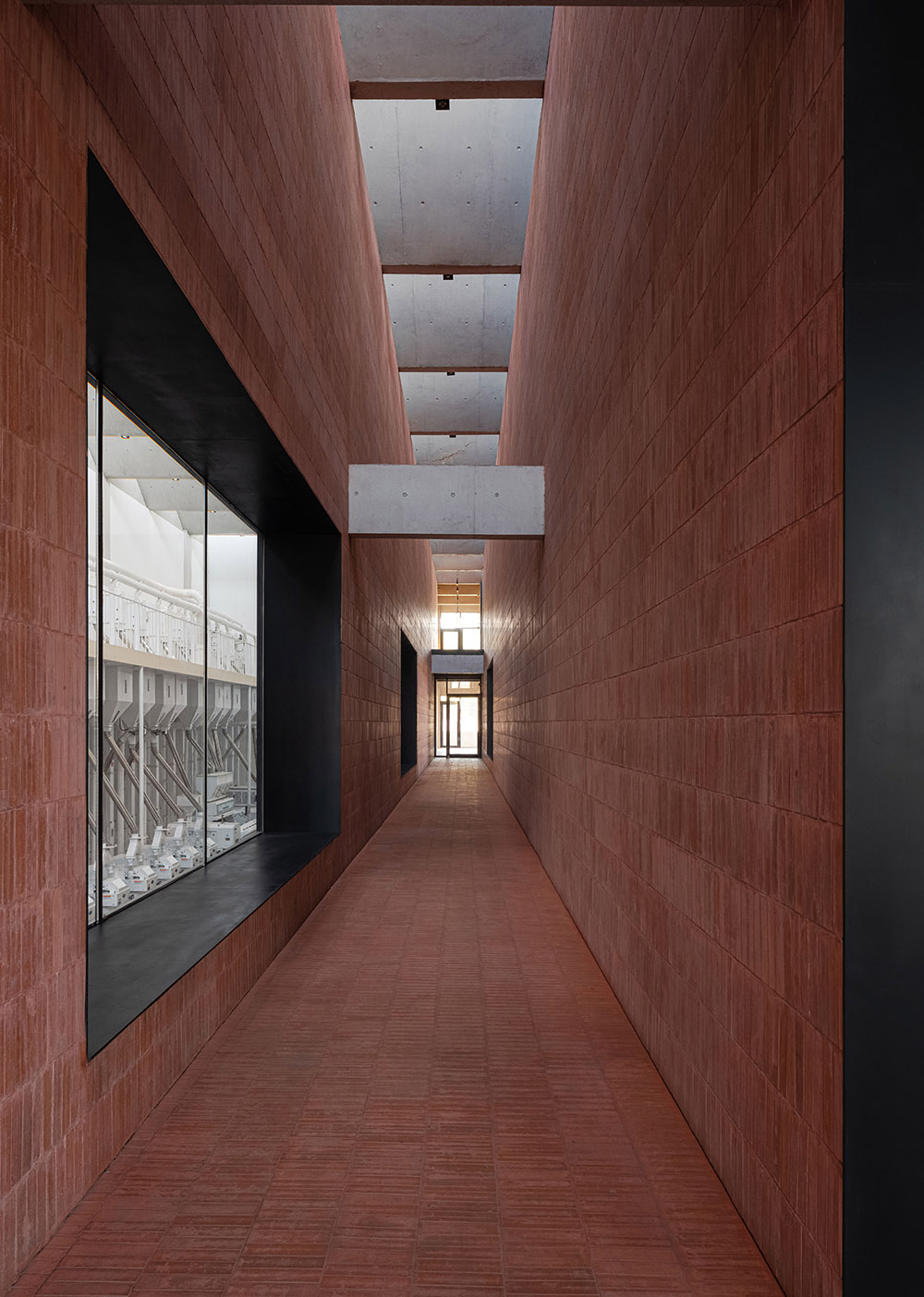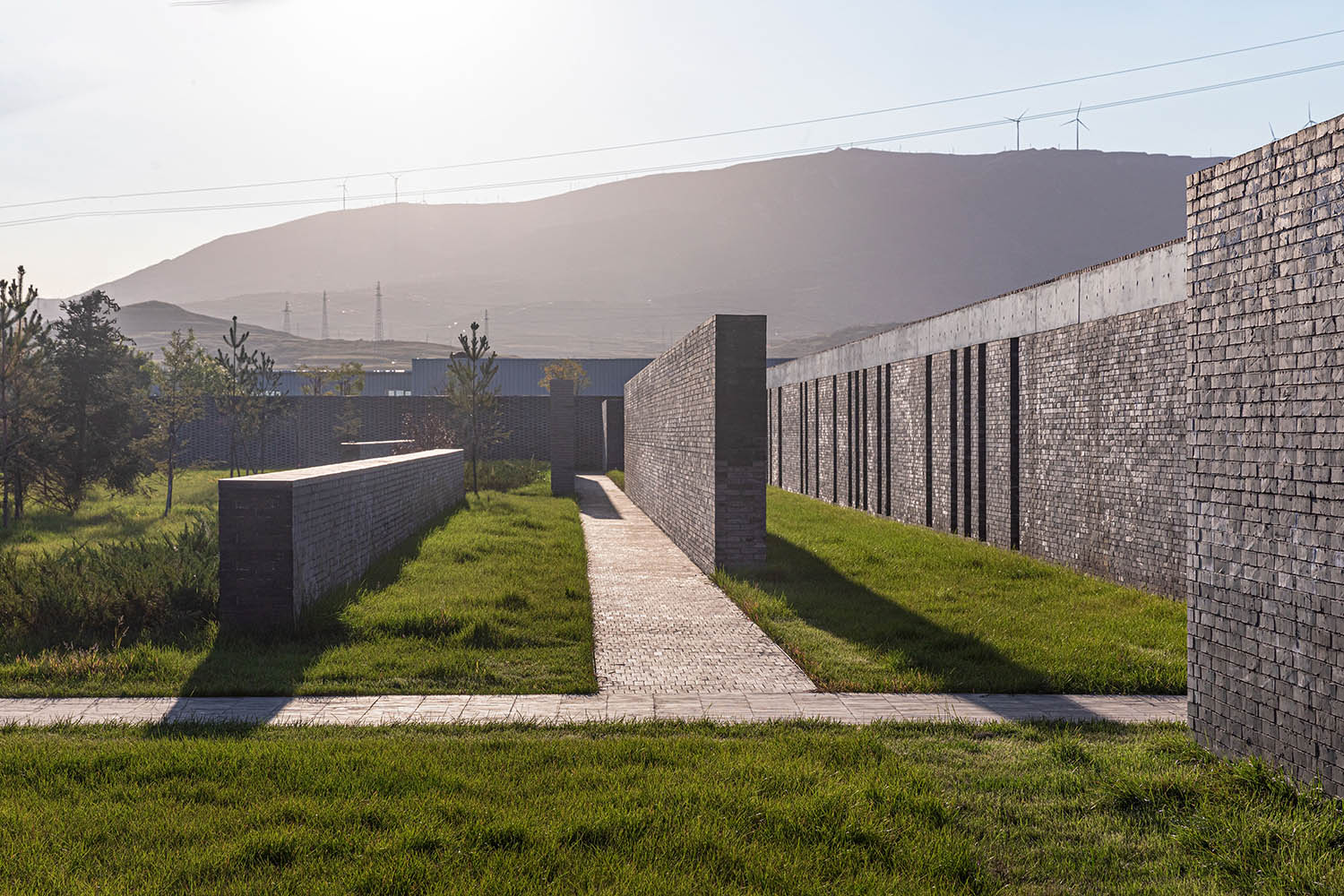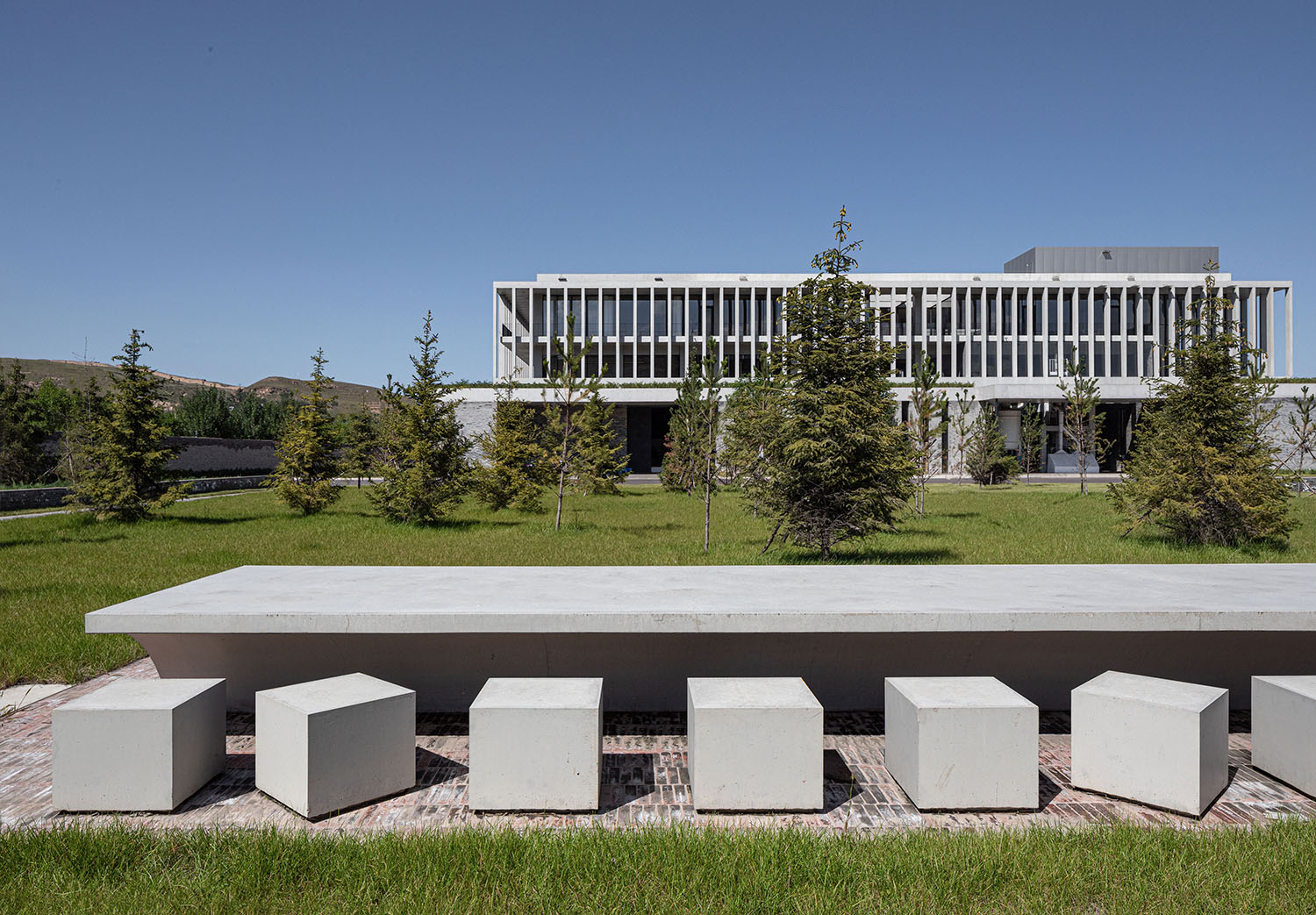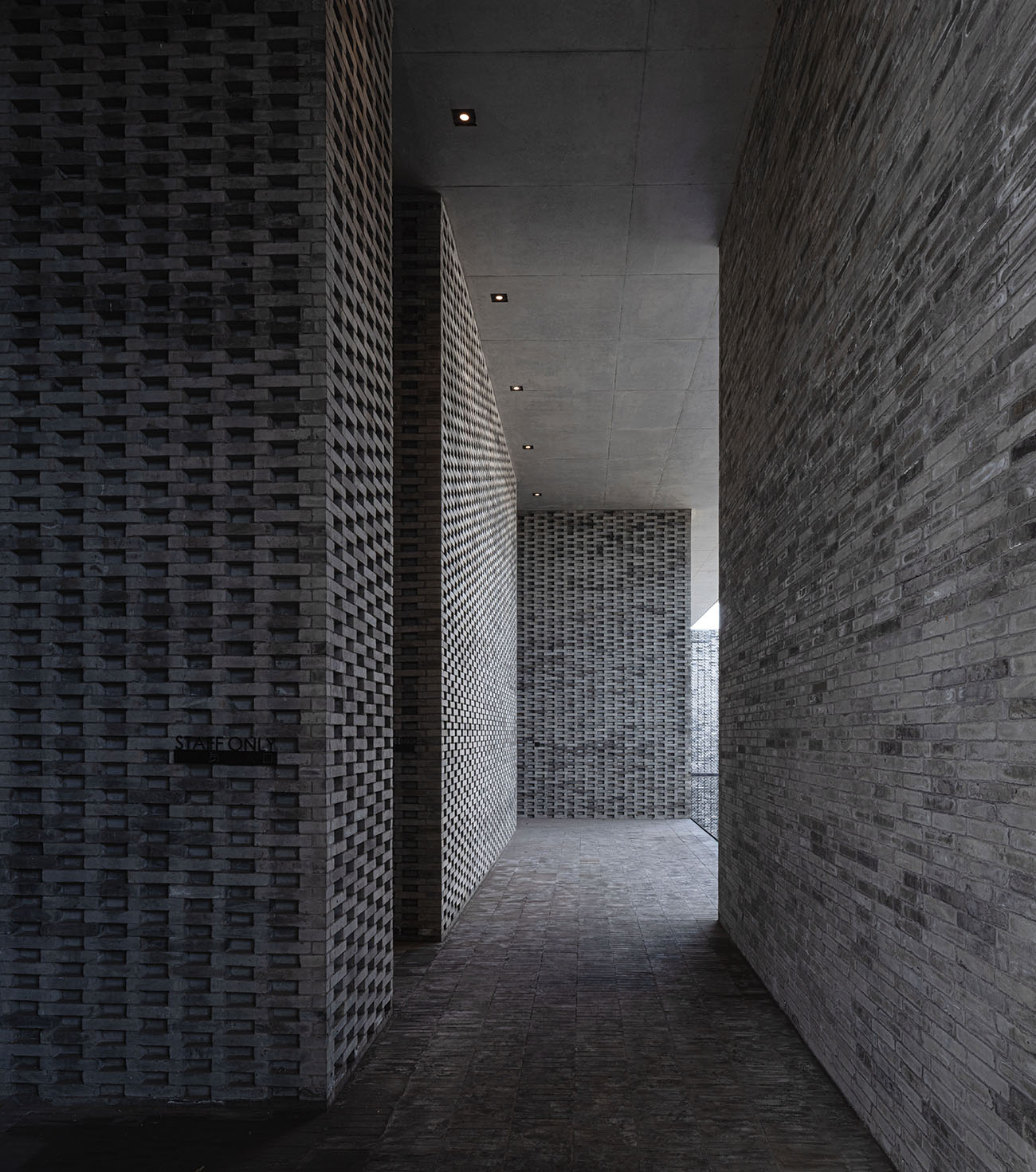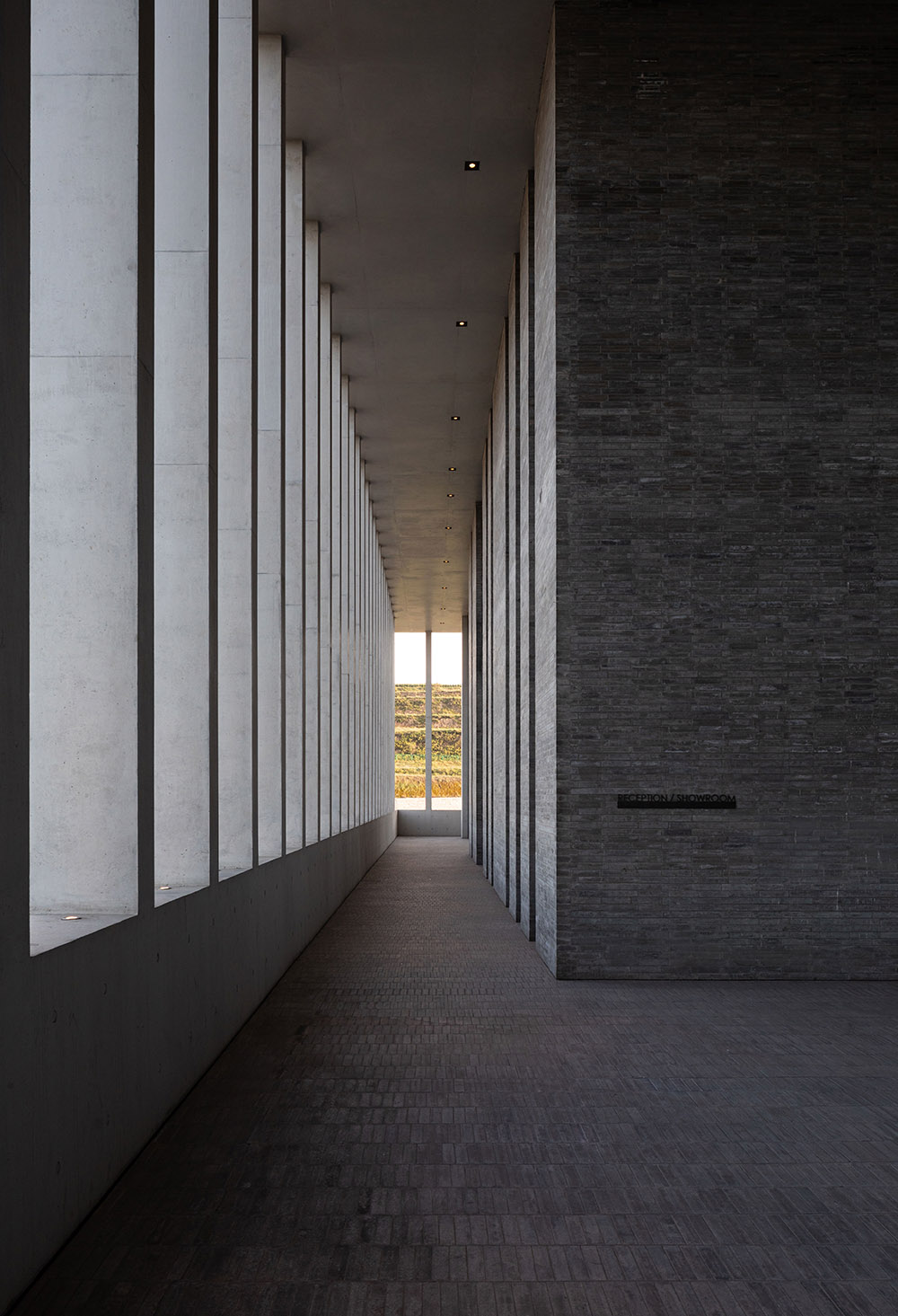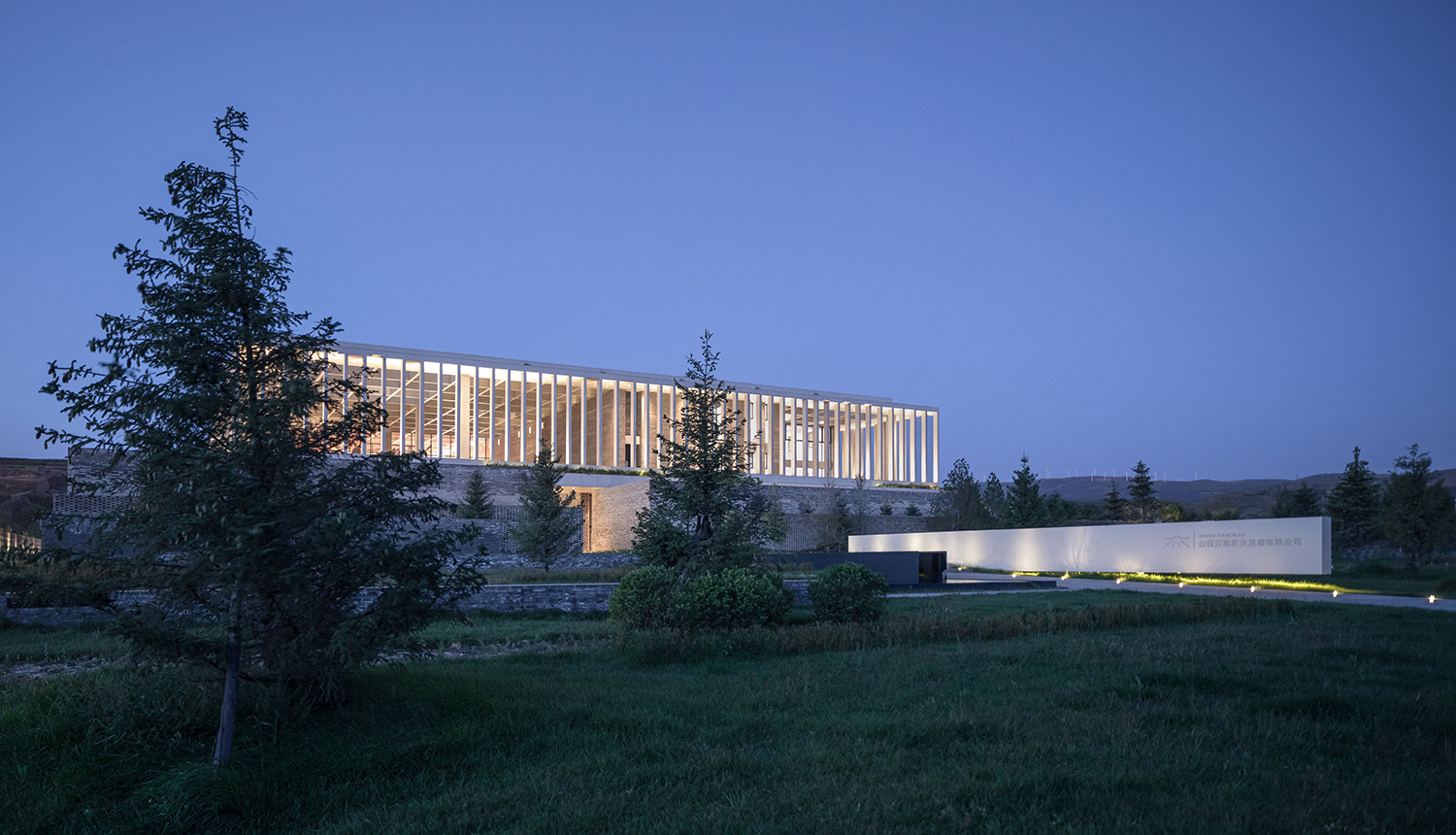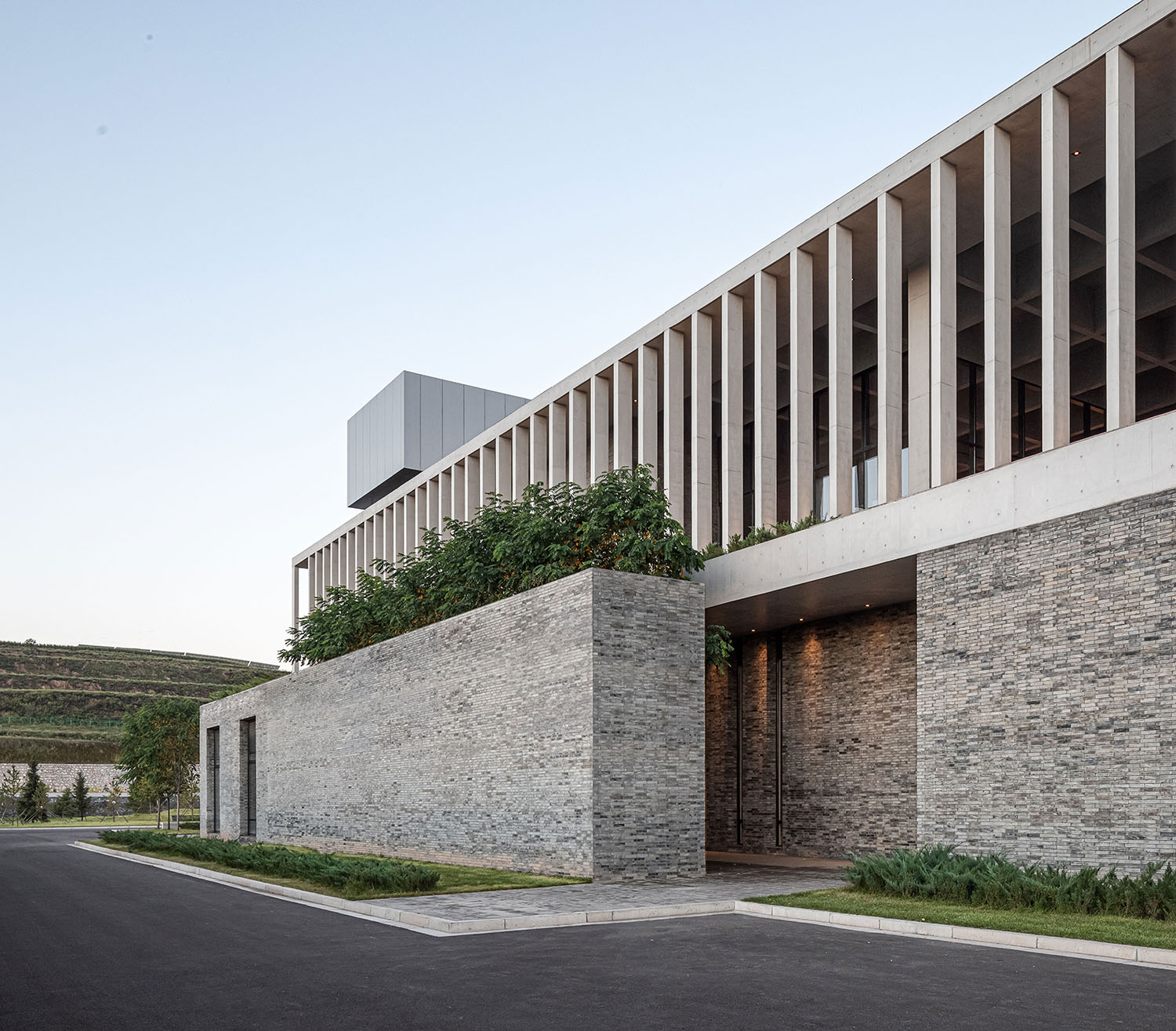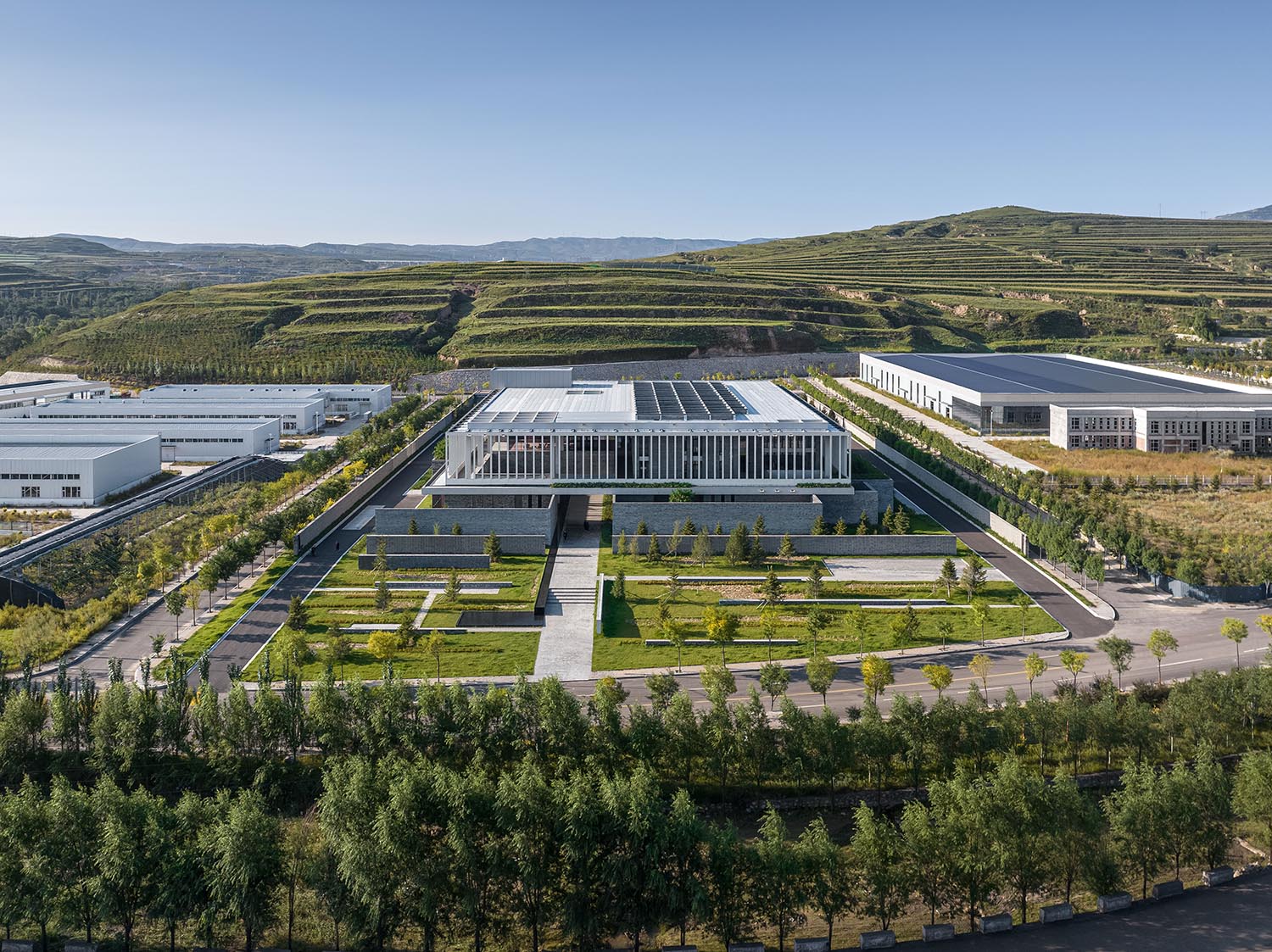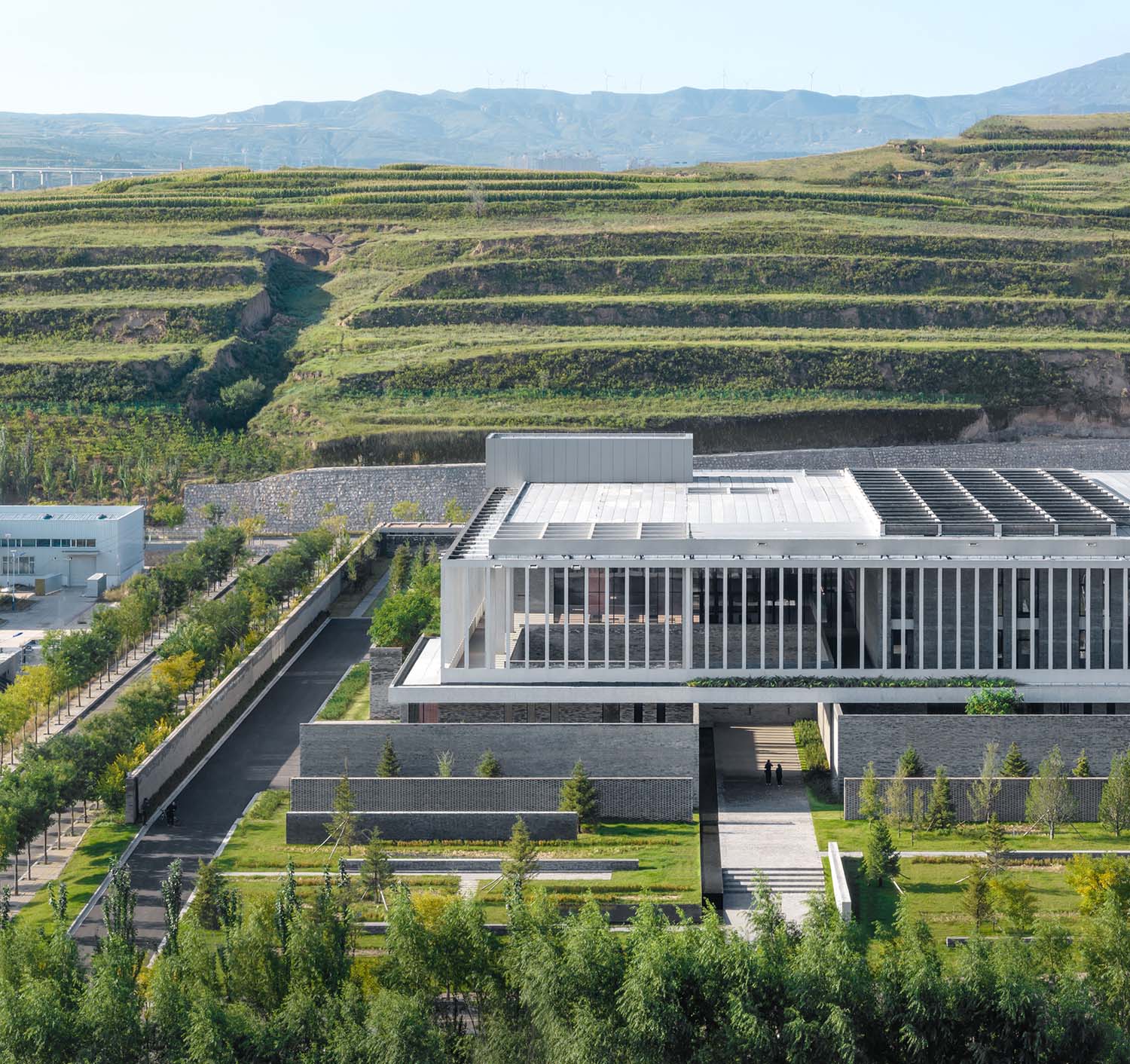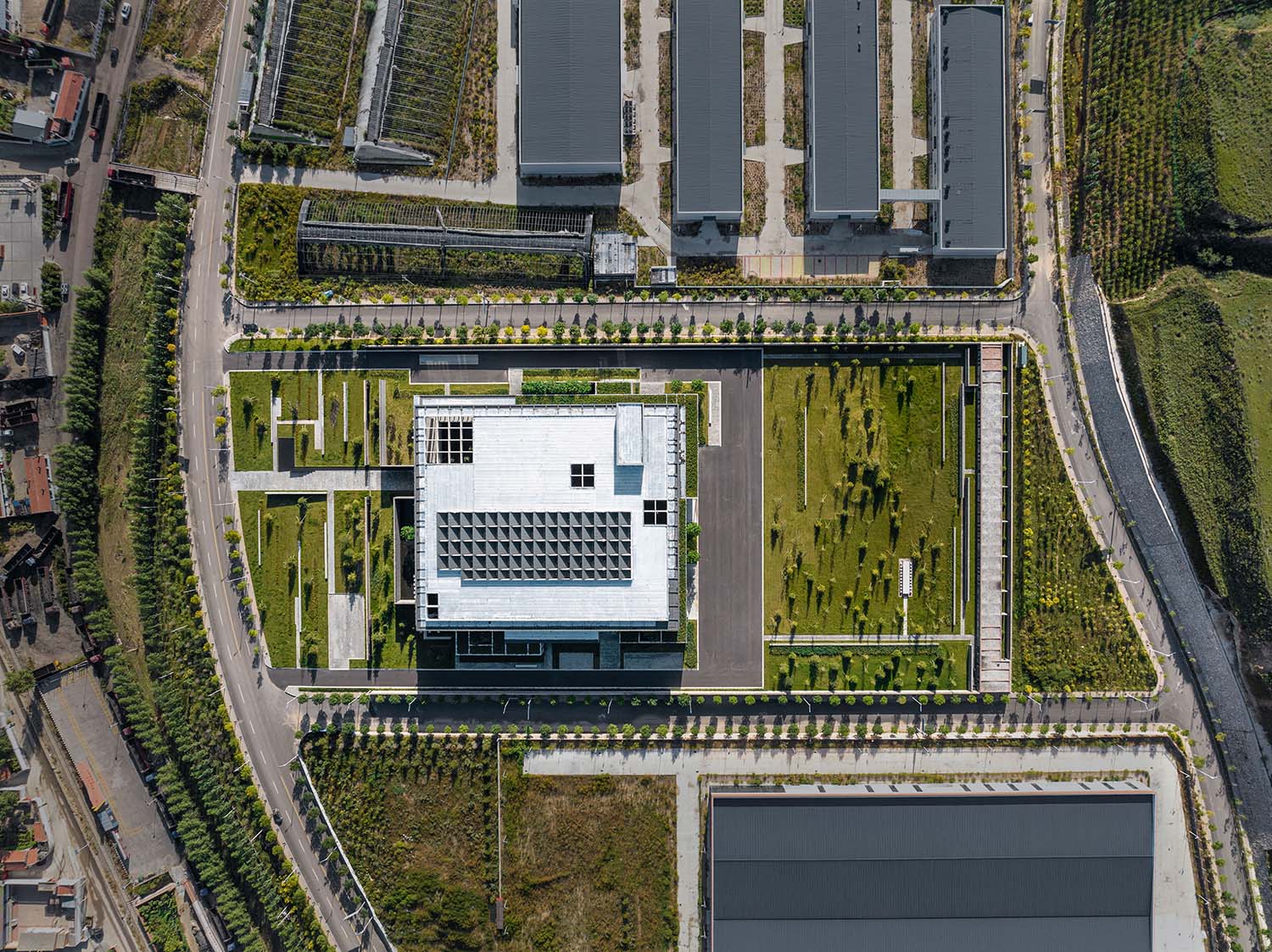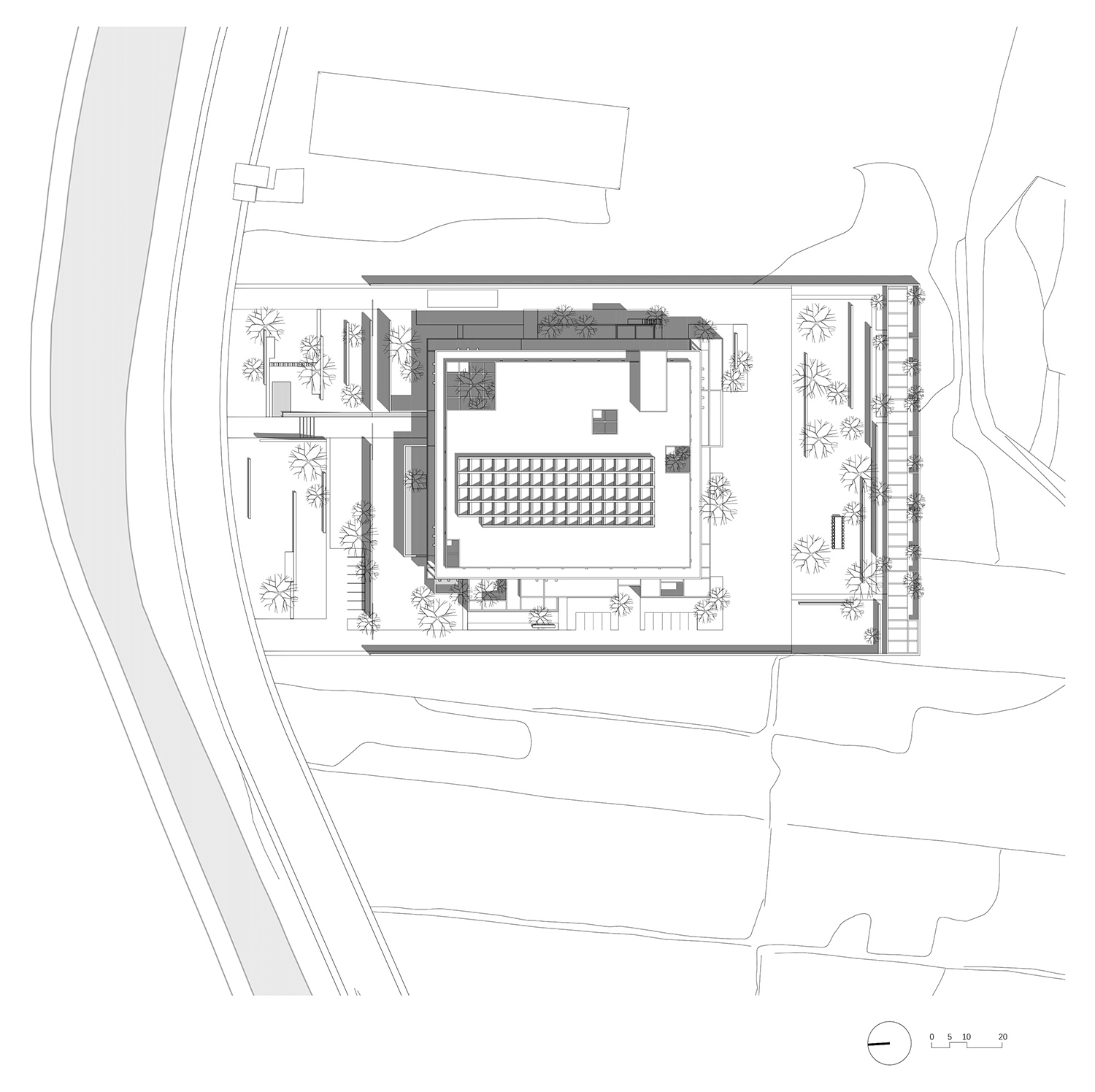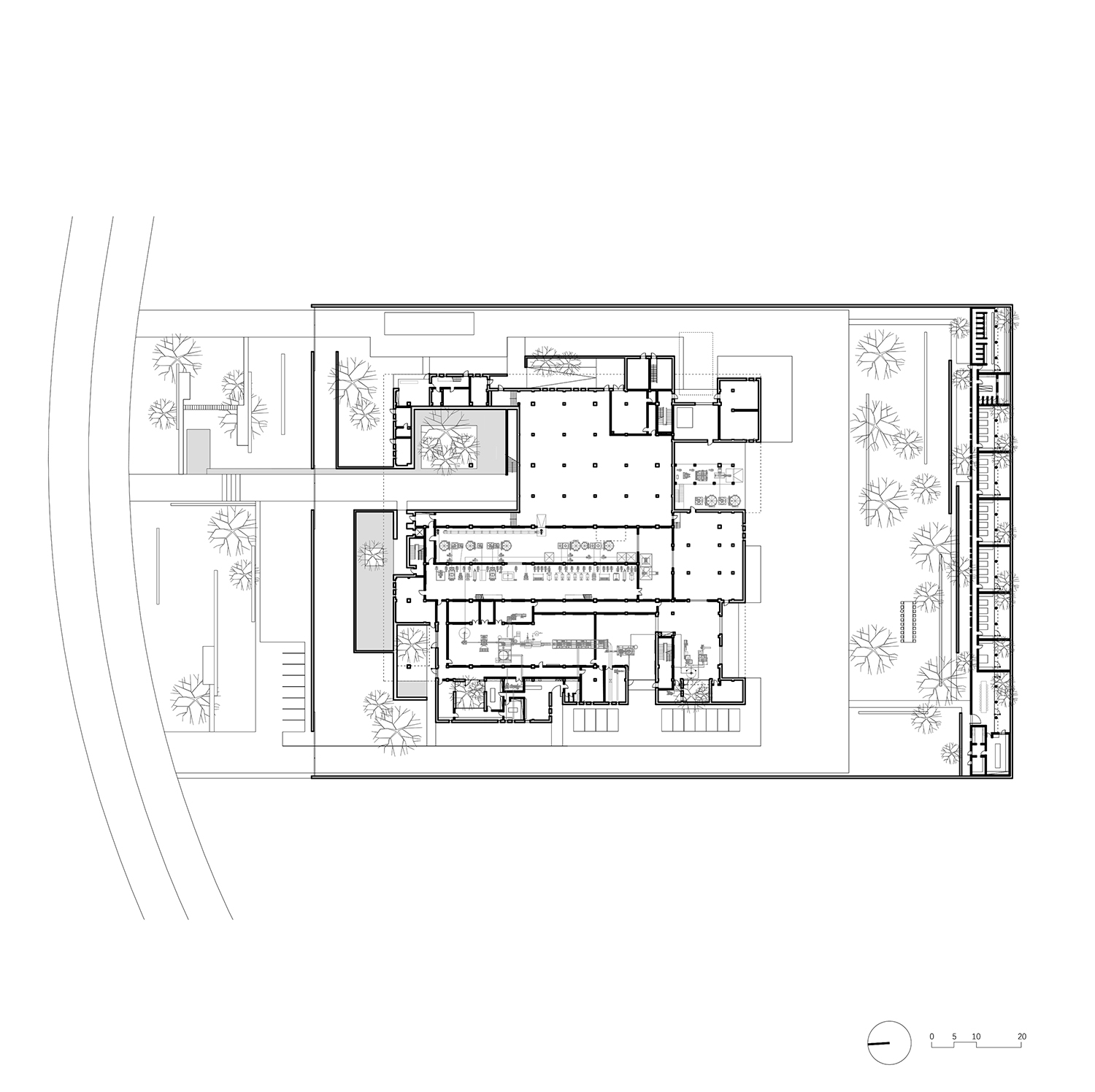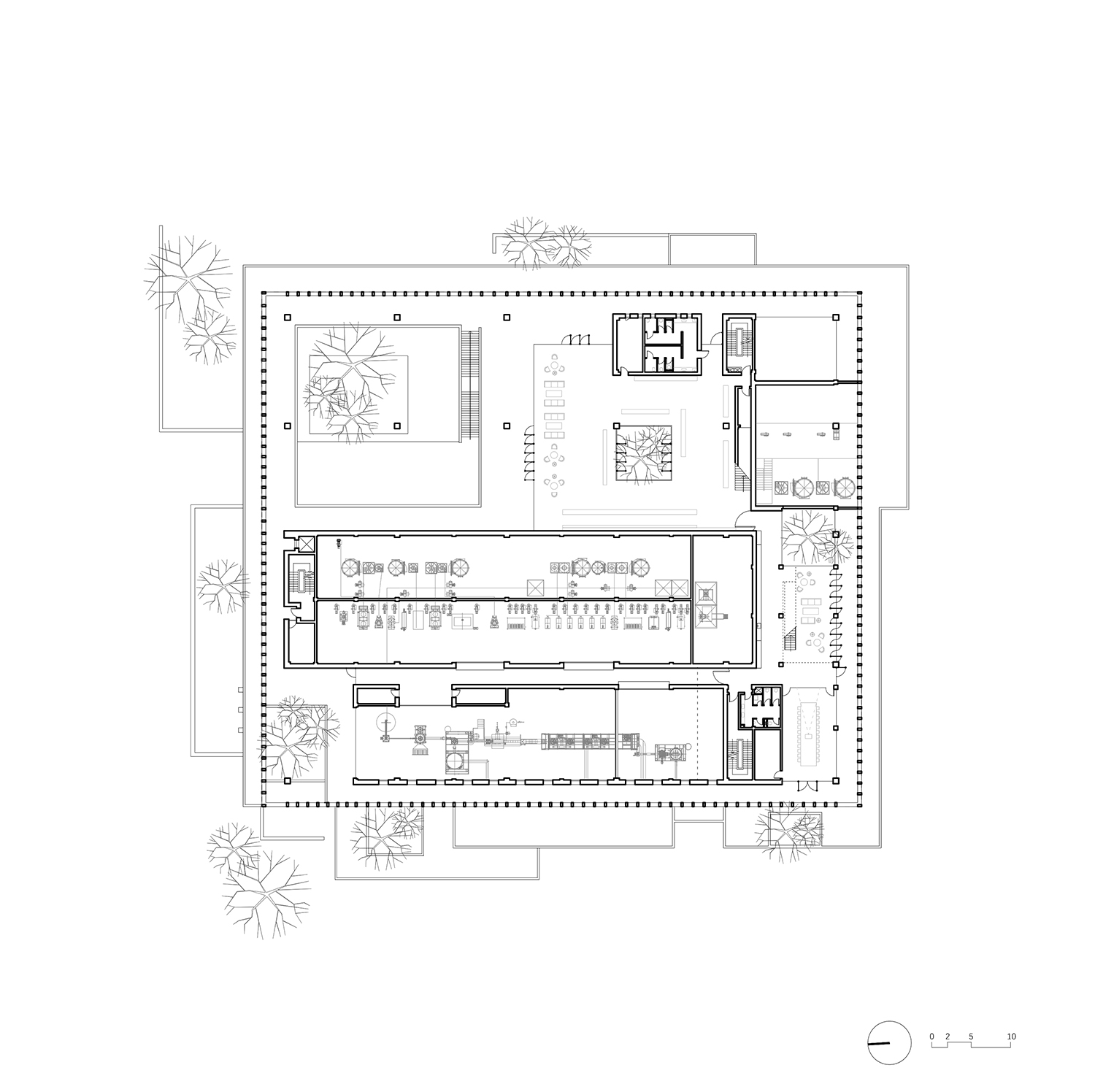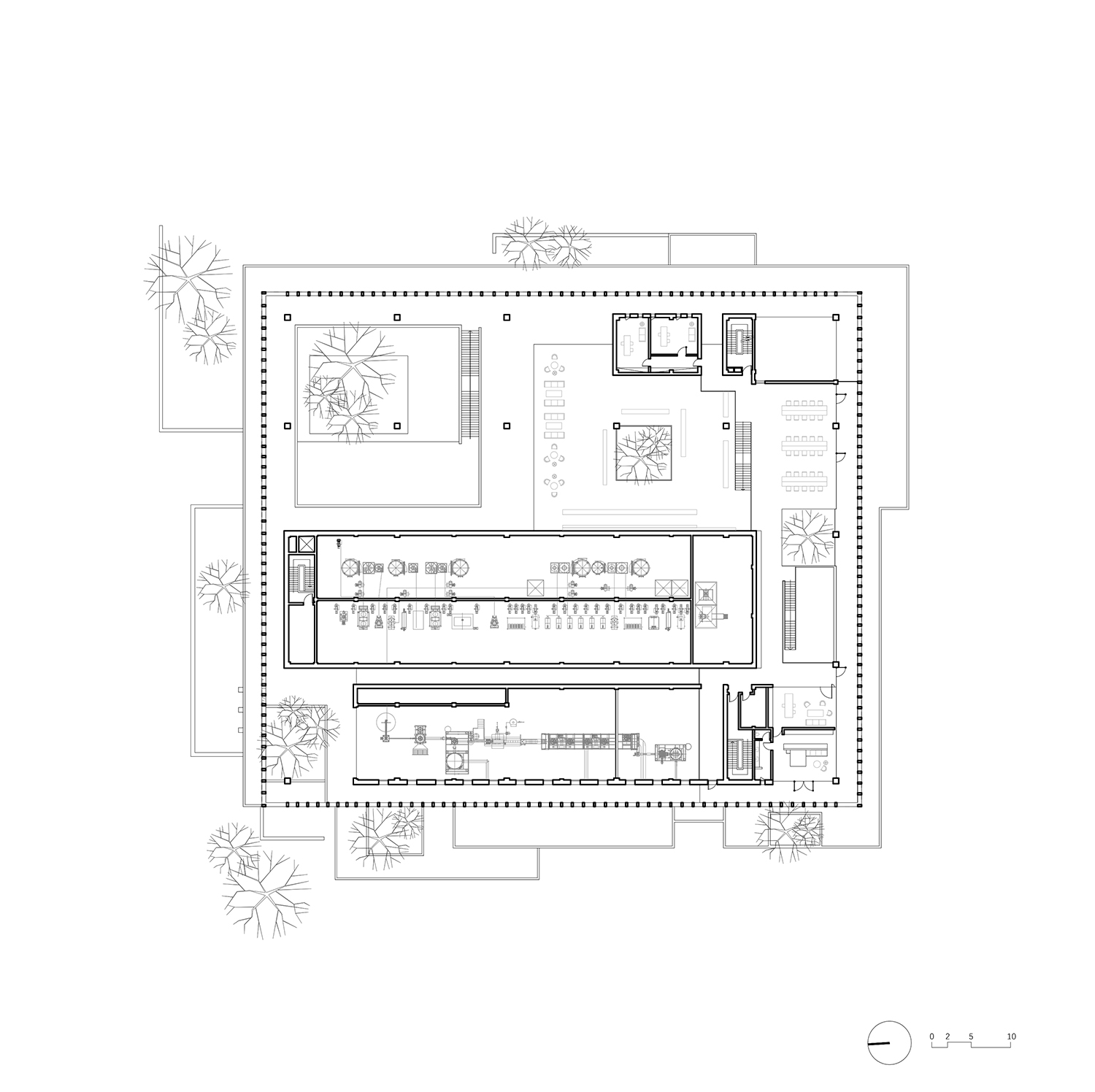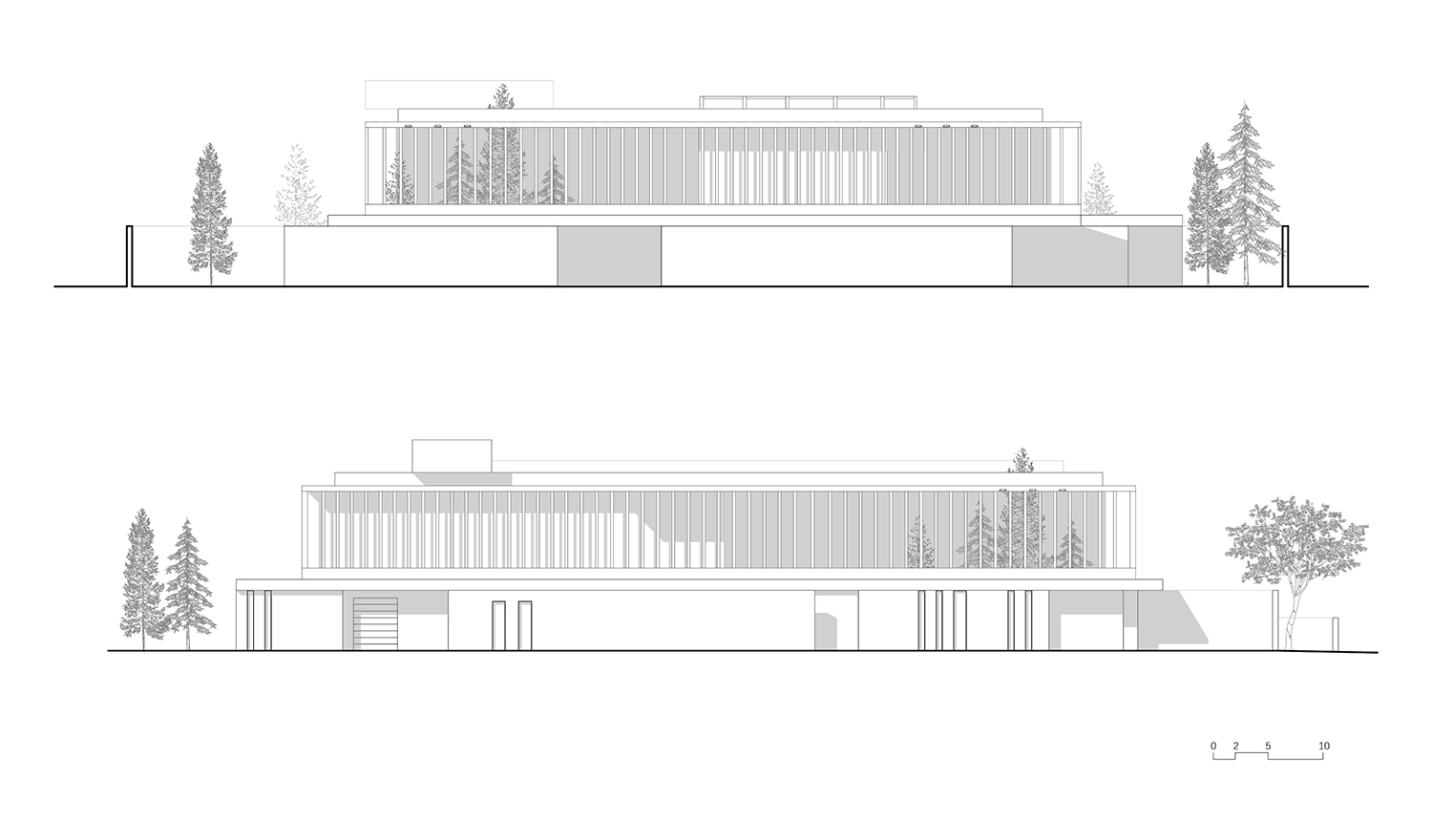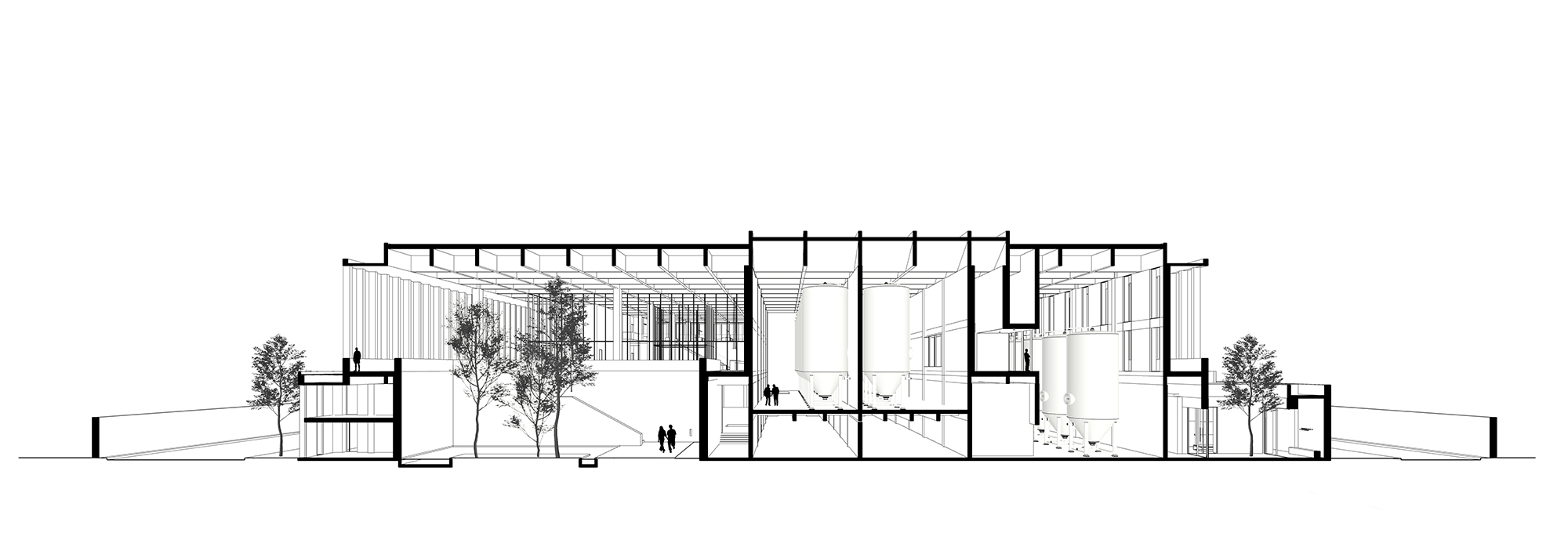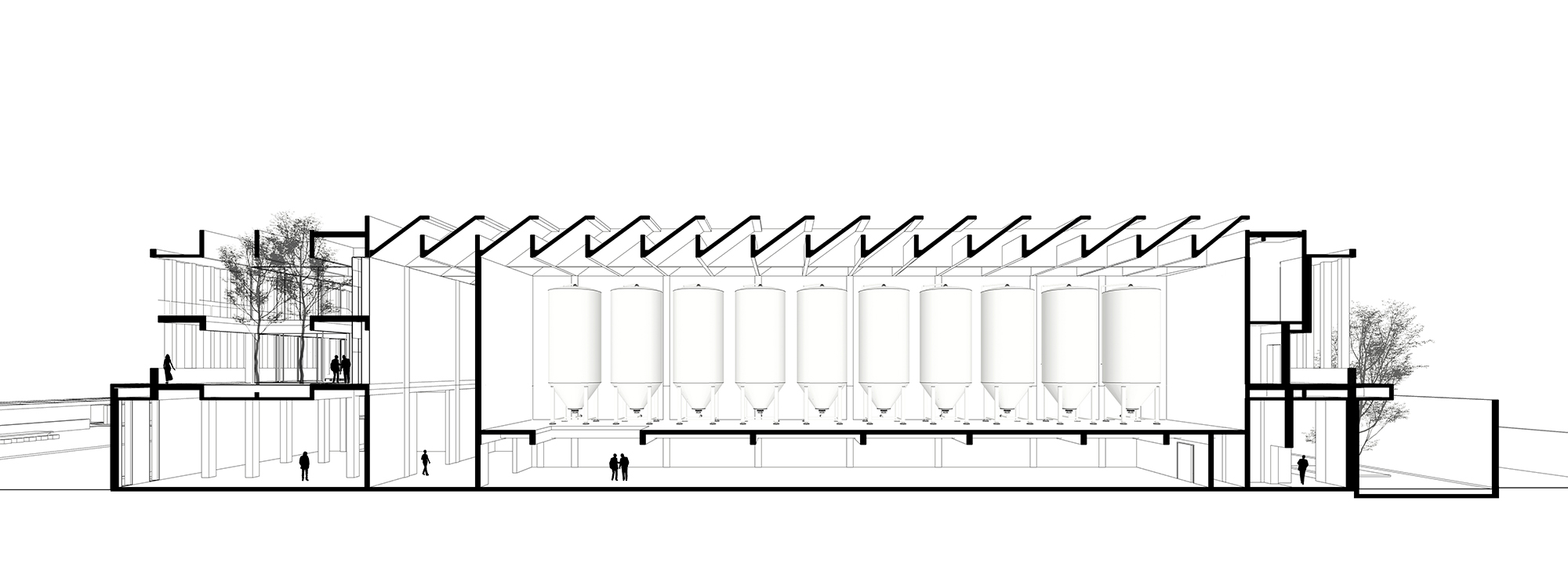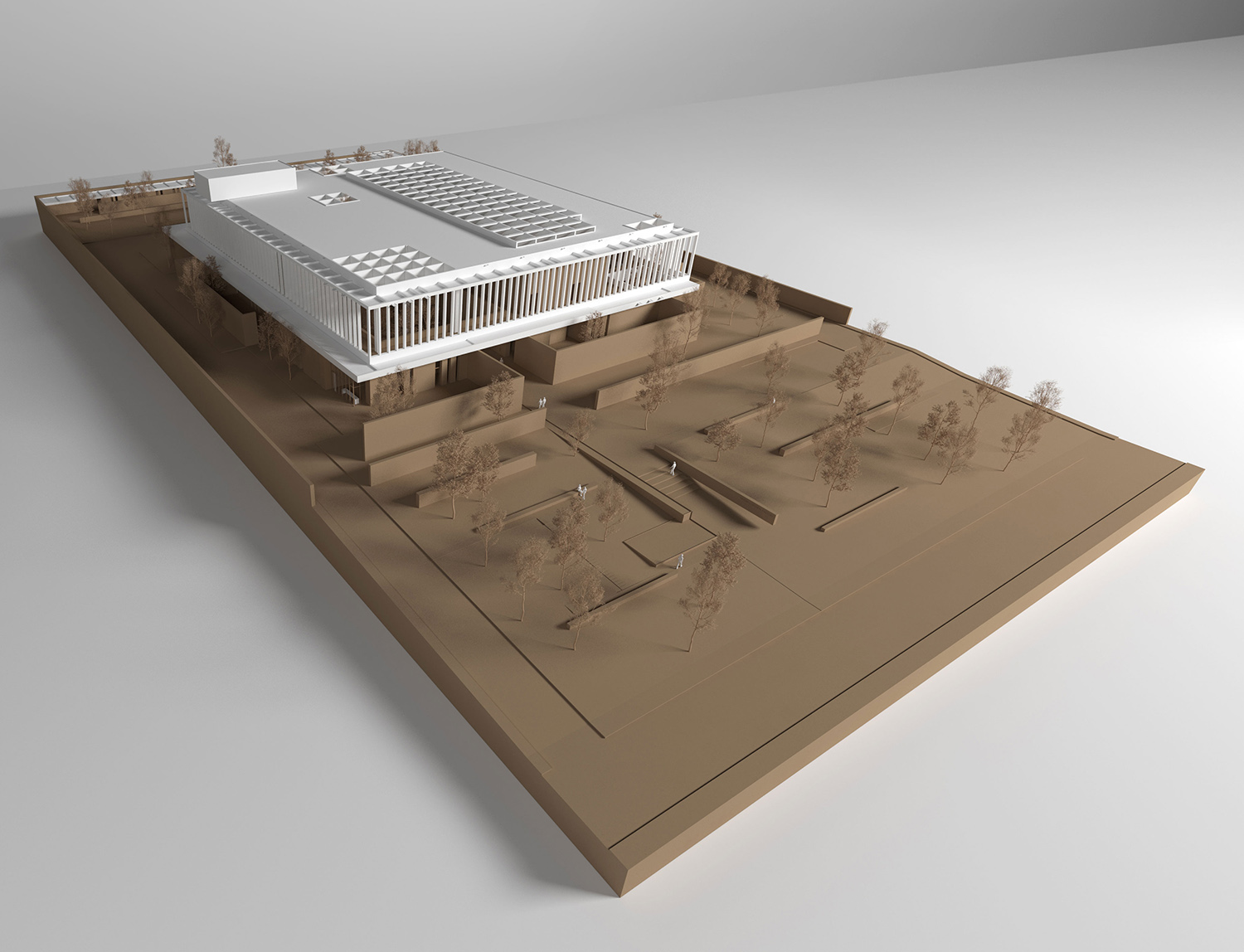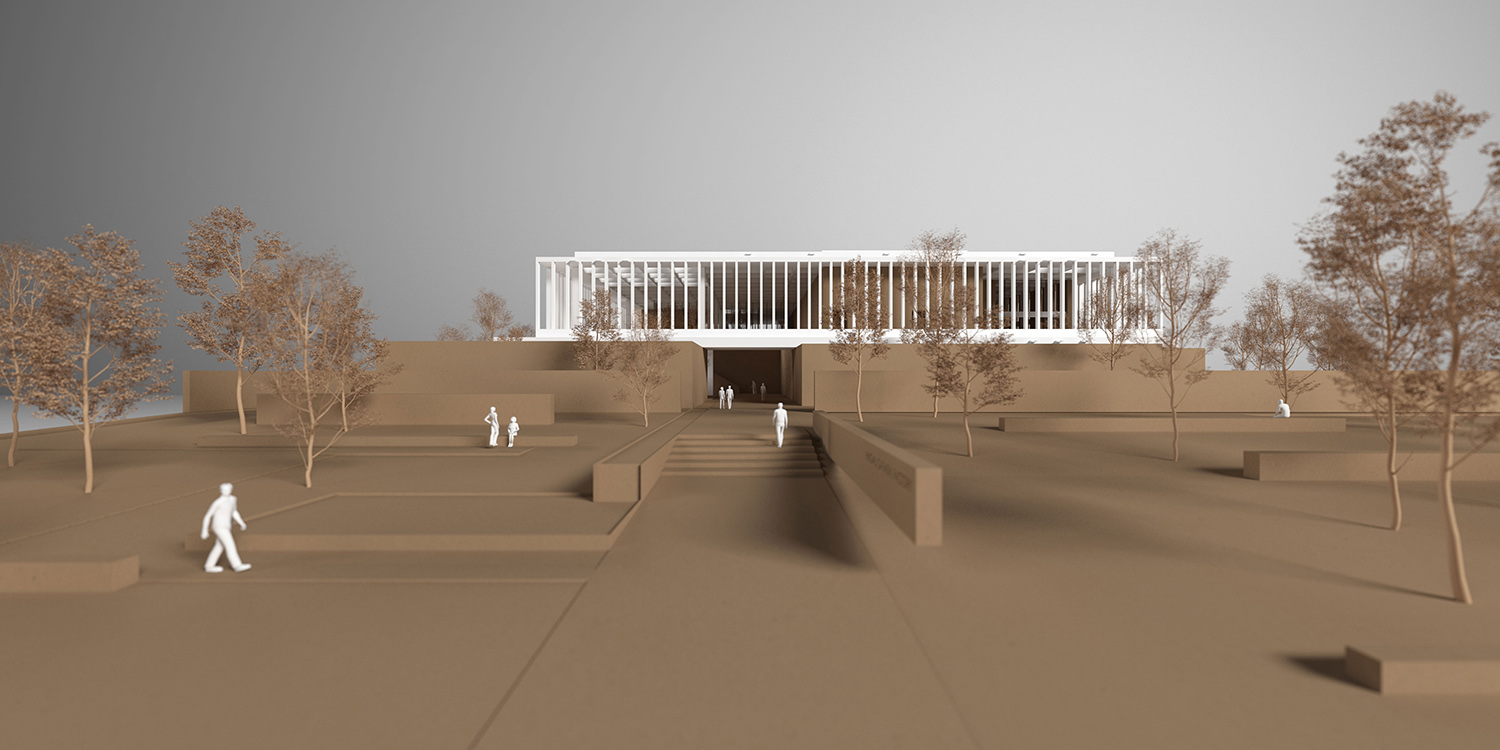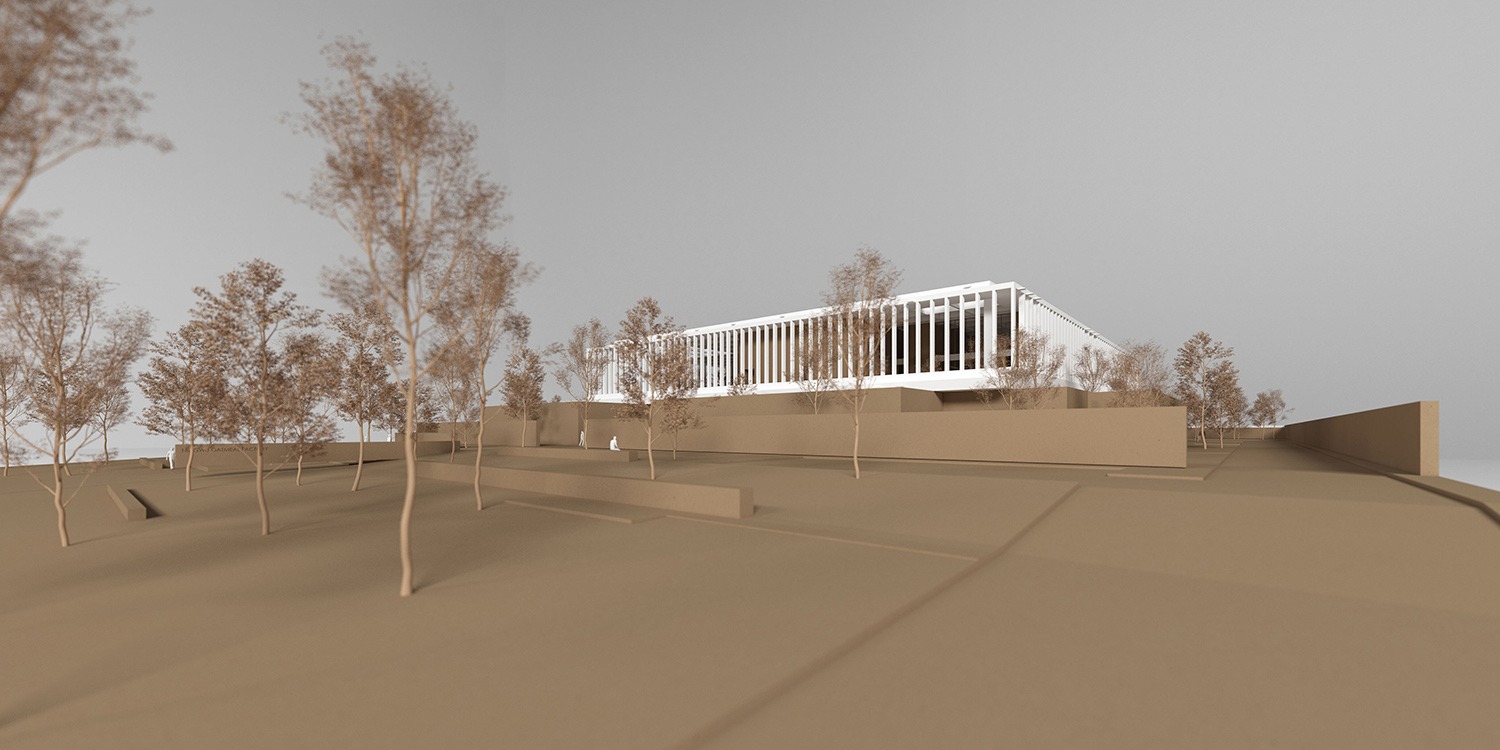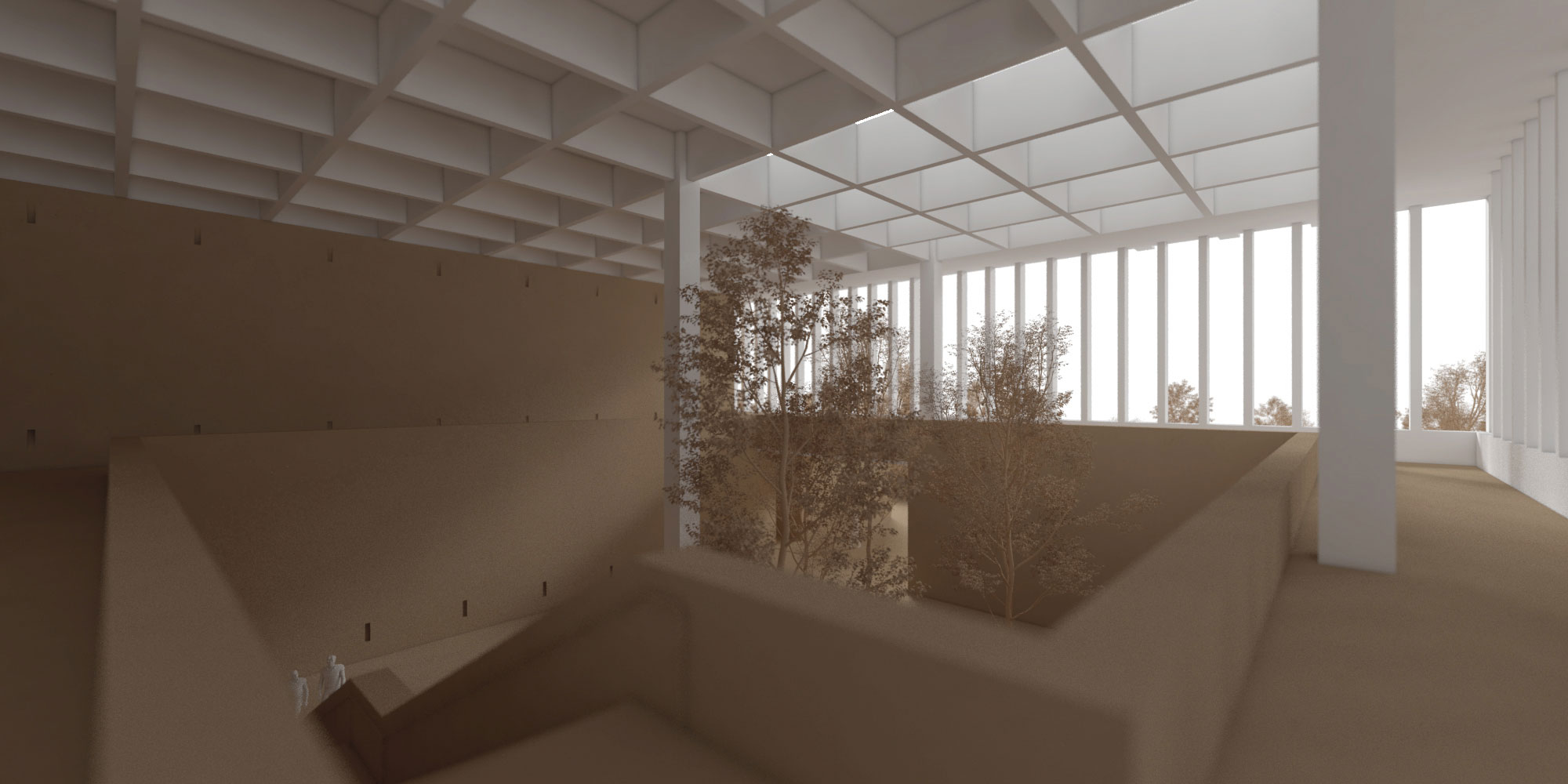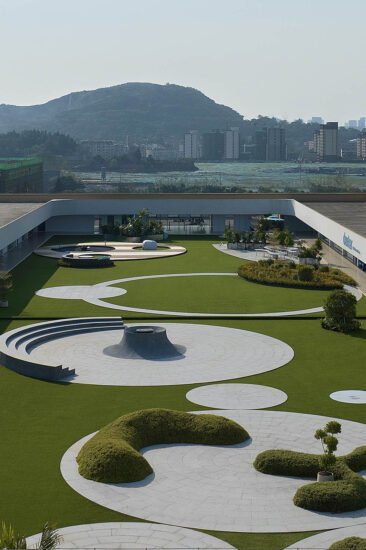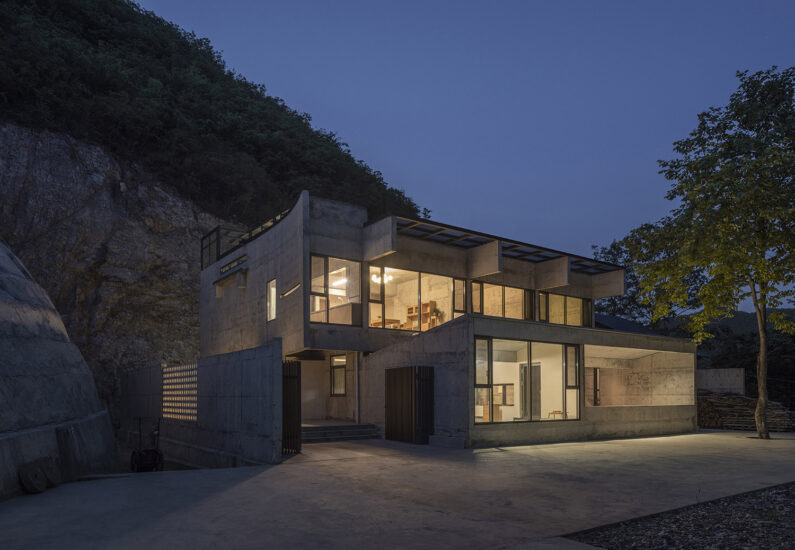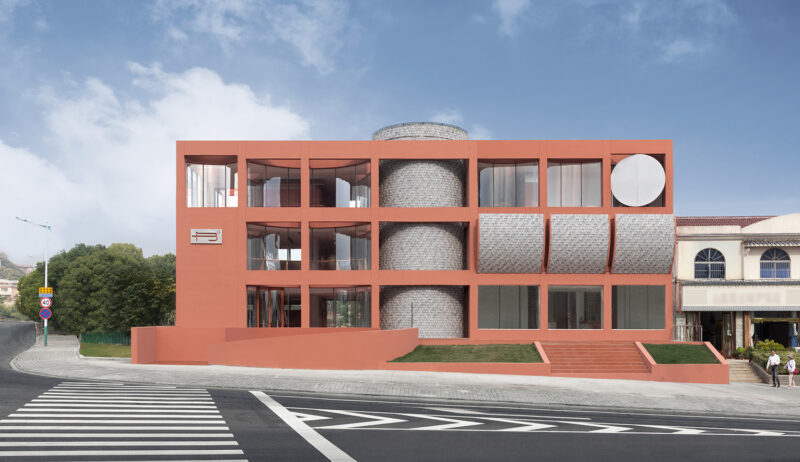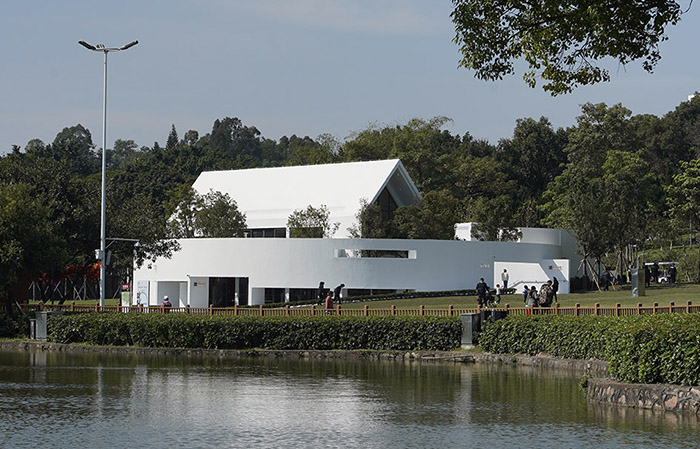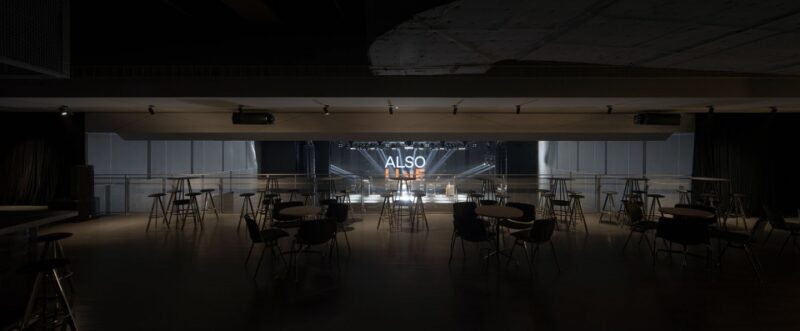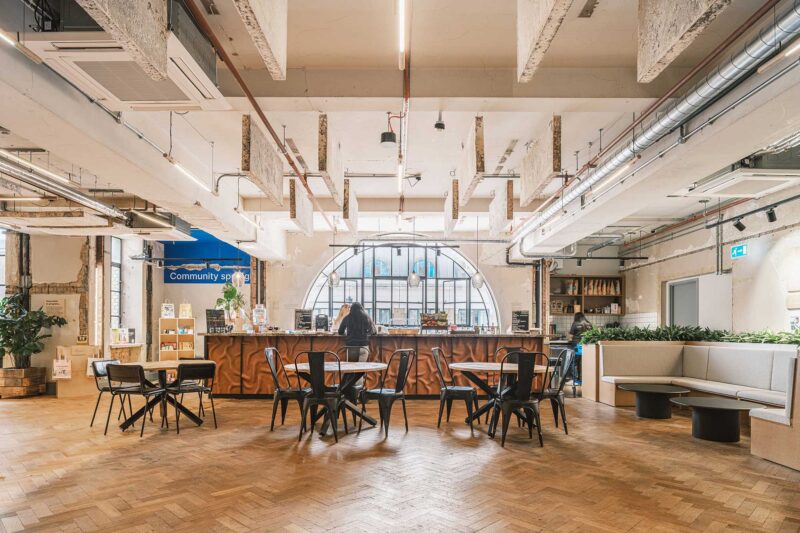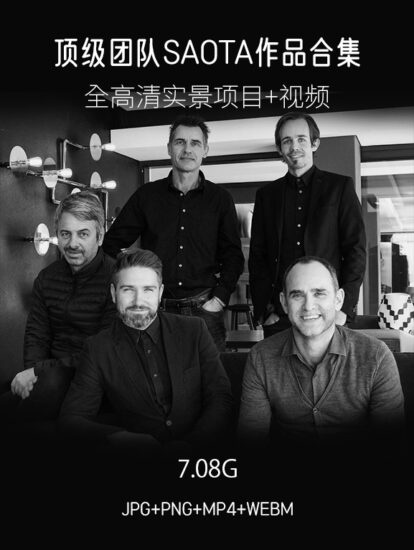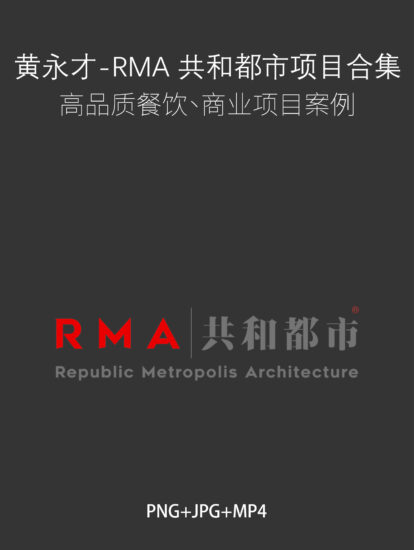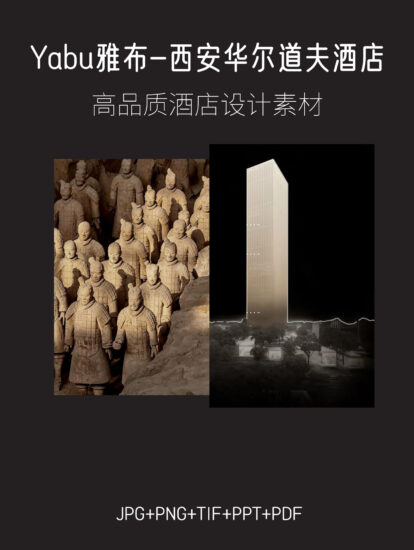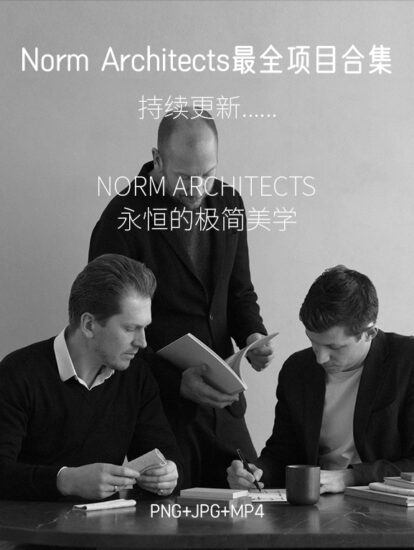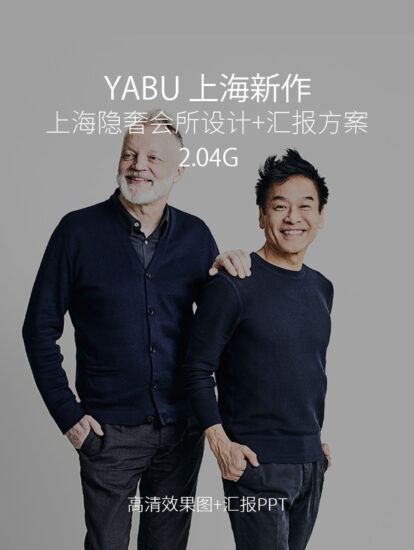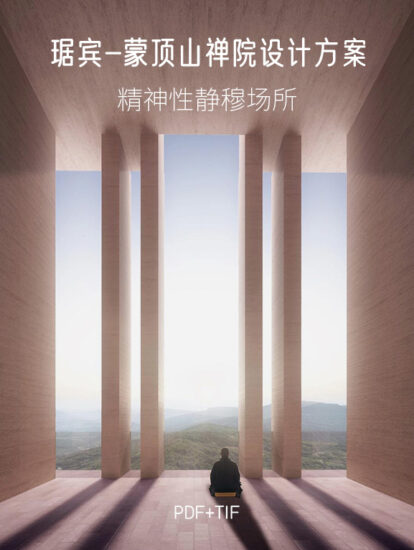該項目位於山西省寧武市,包括建造一座燕麥工廠: 將生燕麥進行深加工,轉化為燕麥米及燕麥粉、燕麥衝調粉等產品。自動化加工過程需要建設兩條不同的生產線,配備大批量機械設備。同時,也需要建造對公眾開放的空間,包括商店、咖啡廳及辦公空間。
Located in Ningwu, Shanxi province, the project consisted in the creation of an Oatmeal factory, transforming raw oat into flour products. The production process, mostly automated, needed two different production lines with high volume machinery and spaces open to the public with shop, café and office spaces.
∇ 項目概覽
∇ 現場施工前
該項目的周邊環境並不理想,有一些新建的工業廠房,當地幹燥氣候條件下的景觀及煤礦等,由此我們考慮將工廠發展成一座內向型建築,重新創造其內部的自然環境。除了滿足所有的功能需求,我們希望這個建築能夠激發人 們更多的感受,給參觀者的體驗帶來驚喜感。
The surroundings of the project offered very low quality with newly constructed industrial buildings, dry landscape and coal mines and it seemed interesting to develop the factory as an introverted building that would recreate its own natural environment. Besides satisfying all functional requirements, we thought the project as a building that stimulates human senses, that would propose a surprising experience to the visitor.
我們的概念是使用磚牆的形式將工廠的各個技術空間圍合和隱藏起來,在這個不透明的底層上方搭建一個簡潔的有體量感的混凝土建築,承載該項目全部的公共空間。
The idea was to use a system of brick walls to enclose and hide the various technical spaces of the factory into an opaque ground floor and to set-up a simple concrete volume on the top of it, to host all the public spaces of the program.
∇ 天井和花園
∇ 二層視角
天井和花園將穿透整個建築,提供自然采光的同時在工廠內創造了令人印象深刻的空間延伸感。建築中央的生產車間通過屋頂混凝土結構的特殊形狀得到北向明亮的自然采光。
Patios and large gardens will pierce the whole building, to provide natural light while creating impressive spatial dilatations within the factory. Central production spaces will also get natural light from concrete sheds, opening the roof to the north light.
∇ 訪客接待
∇ 產品商店及咖啡廳
磚牆的設計形式從工廠正門開始,那裏的景觀區域特意開放給當地社區使用,設有長椅和水池供孩子們玩耍。磚牆由長椅的形狀開始,逐漸成長為工廠適宜的圍護,再之後發展為整個建築的外牆。
The system of brick walls starts from the front of the factory, where a landscape area is voluntarily left open to the use of the local community with benches and water pools for kids to play. Brick walls grow slowly from benches shape to become the propriety fence of the factory and later, the façade of the whole building.
∇ 辦公區
∇ 生產車間
∇ 訪客路徑
磚牆的形狀將形成和定義工廠的不同入口,每個入口均有其特定的功能:原材料的運送、產品的裝載、工作人員及參觀者的入口。員工和訪客被劃分為不同路徑,在工廠內不會有任何交集。工作人員將享有一個有序組織的工作環境,而參觀者則將經曆一段有規劃的空間體驗。並在參觀過程中的某個時刻,站在俯瞰車間的高架走廊上看到整個生產線的展示。
The shape taken by the brick walls will form and define the different entrances of the factory, each of them with a specific function: The raw materials delivery, the products loading, the staff and the visitor entry. Separated into distinct paths, staff and visitor will never cross ways inside the factory and while the workers will enjoy a functional organization, the visitor, will go through a planned spatial experience. At one moment only, the production line is showcased to the visitor in an elevated corridor overlooking the workshop.
∇ 員工宿舍
員工宿舍被設置在工廠的後麵,設想為一個隱形的建築。以加厚的磚砌圍牆為建築的主體,並在建築內部設計了天井庭院,為房間帶來采光的同時保證了私密性。工廠和宿舍之間的空地改造為了一個花園,其中設置了一個混凝土澆築的長桌和方形座椅。
The dormitory for employees was set-up in the back of the factory and conceived as an invisible architecture. The brick fence wall was thickened to host the building and patios were created to bring light to the rooms while preserving their intimacy. The space between the factory and the dorm becomes a garden in which a concrete table and square seats were set-up.
建築材料的選擇也具有很強的現實意義:使用青磚及當地的施工方法是一種與場地建立深厚關係的方式。另一方麵,清水混凝土強調了建築的現代性,並且可以使結構本身和建築緊緊結合在一起。
The choice of construction materials carries a strong meaning: the use of the grey brick is a way to create a deep relationship with the site, using local construction methods. Exposed concrete, on the other hand, emphasizes the modernity of the building and allows structure and architecture to be bind together.
∇ 入口LOGO牆
∇ 混凝土排水口
景觀設計也完全融入到了設計過程中,屋頂收集的雨水通過現澆混凝土排水口被重新引向不同樓層的水池,使雨水的自然循環成為空間體驗的一部分。水流一直順勢流到工廠的入口處,在那裏彙成一道景觀瀑布落下,結合12米懸空的混凝土LOGO牆,邀請參觀者進入建築。
The landscape design is also fully integrated in the design process and rain water collected on the roof is redirected to water pools on different levels through cast-in-place concrete water exhausts, making the natural circulation of rainwater part of the experience of the space. The water flows until the entrance of the factory where a last water fall, combined with a twelve meters cantilever concrete logo wall invites the visitor to enter the architecture.
在整個設計過程中,設計師需要更好的處理監管規範帶來的限製和要求。消防規範要求建築頂部必須設有一個消防水箱,我們將其設計成一個挑出的不鏽鋼盒子,這是一個完全獨立的元素,使其最後以一個現代雕塑的形態輕盈的懸空在屋頂上。
Across the design process, some regulatory issues were solved through design. Fire-fighting regulation required a water container on the roof that we decided to design as an independent element, a cantilevered stainless-steel box, like a sculpture on the roof.
∇ 總平麵圖
∇ 一層平麵圖
∇ 二層平麵圖
∇ 三層平麵圖
∇ 立麵圖
∇ 剖麵圖
∇ 建築模型
項目信息
項目名稱:寧武燕麥工廠
項目坐標:山西省寧武市
項目類型:景觀設計、建築設計、室內設計
項目狀態:已建成
設計公司:JSPA Design
主持建築師:Johan Sarvan, Florent Buis
設計周期:2018年3月- 2019年3月
施工周期:2019年7月-2021年10月
場地麵積:23850平米
建築麵積:8800平米
員工宿舍:600平米
工廠室內麵積:7500平米
建築淨高:15米
容積率:0.40
綠化率:0.80
結構工程師:蔣傑設計
機械、電器、管道顧問:蔣傑設計
材料:灰磚、紅磚、混凝土
造價:7000萬人民幣
攝影:Schran Images
Project name: Oatmeal Factory
Project location: Ningwu,Shanxi province, China
Project type: landscape design, architecture design, interior design
Project status: built
Design firm: JSPA Design
Principle architects: Johan Sarvan, Florent Buis
Design period: March 2018 – March 2019
Construction period: July 2019 – October 2021
Site area: 23800 sqm
Gross floor area- factory: 8800 sqm
Gross floor area- dormitory: 600 sqm
Interior space: 7500 sqm
Architecture height: 15 meters
Floor Area Ratio: 0.40
Greening rate: 0.80
Structural engineer: Jiangjie Design
MEP Consultant: Jiangjie Design
Building materials: grey bricks, red bricks and concrete
Cost: 70 million RMB
Photo: Schran Images


